Sony Cyber-shot RX100 V has received good marks for its high speed. Whether it’s fast autofocus or continuous shooting 24 frames per second, the compact camera works at lightning speed. We appreciated the first-class image quality that comes with the 1-inch sensor, numerous advanced options, UHD video and slow motion, as well as an electronic viewfinder. The camera earned criticism only for the slow operation of the SD card slot and for too long a turn-on time of 2 seconds.
Benefits
Superb image quality
Retractable electronic viewfinder
Fast autofocus suitable for instant shooting
Fastest burst shooting
Ultra HD video and slow motion
disadvantages
Disproportionately low data storage speed
Long on time
Lack of touch screen
Sony Cyber-shot DSC-RX100 V Test Results
- Price-quality ratio
Good - Place in the overall ranking
3 from 61
- Value for money: 61
- Image Quality (50%): 97.4
- Facilities and management (40%): 93
- Performance (10%): 92
95%
Editorial assessment
User rating
The shutter speed shows excellent results up to 1/32000 second, the ND filter compensates for three additional exposure numbers
Blink five times, cough three times, one click your fingers. ... In one second, something significant can hardly happen. However, the fact that for someone is just a second, for the Sony Cyber-shot RX100 V is 24 frames. With the speed of a full-length film, a compact camera conducts signals through its semiconductors. 24 frames per second, 20 megapixels each, more than 170 JPEGs in a series.
In other words, you won't miss a thing with the Sony Cyber-shot RX100 V. Rather, almost nothing. Because while everyone is enthusiastic about the new compact camera, breaking speed records, the disadvantages characteristic of other models of this company still spoil the overall positive impression.
Sony Cyber-shot RX100 V: Fast burst shooting, slow memory card slot
The weak point of the Sony Cyber-shot RX100 V camera is its memory card slot. Like other compact cameras, mirrorless system cameras and, not surprisingly, the predecessor models, the minimum recording speed here is equal to the maximum speed. SD cards must be at least UHS-I Class 3 and operate at a speed of at least 30 MB / s in order to cope with Ultra-HD high-resolution video at 100 Mbps and Full HD, as well as slow-motion Full HD recording up to 1000 frames per second .
Videographers will be interested in supporting S-Log / S-Gamut and shooting without the so-called “pixel binning” effect. The only catch: the length of the UHD video clip that the Sony Cyber-shot RX100 V is capable of recording is only five minutes. Then you can continue to shoot, however, the length of the video will again be limited. When shooting Full HD video, the camera can record a clip lasting 29 minutes. This is worth remembering to videographers. As well as the fact that the manufacturer refused the headphone and microphone outputs. And the rest of the camera, thanks to a perfectly clear and sharp image, is best suited for shooting video.
Image quality at SLR level
 Sony Cyber-shot DSC-RX100 V: Smartphones can be used to control the camera remotely via Wi-Fi and NFC
Sony Cyber-shot DSC-RX100 V: Smartphones can be used to control the camera remotely via Wi-Fi and NFC But the camera is also great for taking pictures. The 20-megapixel 1-inch backlit image sensor guarantees first-class image quality at the level of SLR cameras. Noise level, detail and sharpness of the edge to the level of ISO 1,600 do not cause any objections. True, objects with a complex texture, such as grass and flowers in a meadow or foliage, can merge, losing their contours.
The camera does not clearly distinguish between such complex objects, and their image becomes a motley hash. But this minus can be detected only when viewed with a 100% increase on the computer screen, and for everyday shooting they are unlikely to play a role, so let's forget about them, because in terms of image quality, in the end, this camera has one of the best indicators in the market of compact cameras. It will surely surprise even professionals spoiled by cameras of the Alpha series.
No less convincing is the fast standard zoom with optical image stabilization. With a focal length of 24-70 mm (film equivalent) and an f / 1.8–2.8 aperture, the Sony Cyber-shot RX100 V is suitable for shooting almost any subject: wide-angle landscapes, portraits at zoom or reportage photography - almost for In each case, the camera optics have a suitable focal length.
Only when shooting sports 70 mm (in film equivalent), the pictures are not entirely good. For close-ups when shooting from the edge of the field, this is not enough. It's a pity, because with its 24.1 frames per second, the Sony Cyber-shot RX100 V seems to be just made for action shooting. It is impressive that the camera is able to record 173 frames in JPEG format, that is, continuously shoot for 6 seconds. When shooting in RAW format, the camera starts to “stumble” after about 3 seconds, which means 75 frames in practice.
Higher speed ... and for photographers too
 Sony Cyber-shot DSC-RX100 V: For 360 Euros Sony offers a waterproof casing compatible with all RX100 models
Sony Cyber-shot DSC-RX100 V: For 360 Euros Sony offers a waterproof casing compatible with all RX100 models At first glance, everything is pretty good - and in fact it is. But it could have been better if Sony developers had not saved on a memory card slot. The RX100 V takes about a minute to copy all RAW files to the memory card from the buffer memory.
With the “weight” of the file 20 MB, the write speed will be about 25 MB per second, respectively. And this despite the fast memory card. For a compact camera costing about 80,000 rubles, this is not entirely acceptable.
The same applies to the sometimes simply unbearably long time the camera was turned on - at least 2 seconds. Another minus: the lack of a touch screen. Since the first cameras from the RX100 generation, Sony has left the 3-inch screen with high sharpness unchanged. True, the electronic viewfinder, which, like a hinged flash with a range of ten meters, can be pulled out using the slide switch, were improved already in the previous model: the resolution of about 2.4 million subpixels is a very high level.
Another disadvantage is the short battery life. About 260 frames and 62 minutes of video in UHD - there is nothing to brag about here with the RX100 V. So we recommend having one, or better, two spare batteries.
But there is definitely enough space in your bag for “snaps”, since the Sony Cyber-shot RX100 V size camera resembles a pack of cigarettes and weighs only 300 grams. Thanks to this and its excellent performance, this camera can certainly be considered the best spare compact format camera for demanding photographers. It will become a particularly good compact addition for owners of Alpha series cameras. And who does not need high-speed burst shooting, he can purchase the predecessor model. For whom the priority is photographing, we recommend that you take a closer look at the RX100 Mark III.
 F4, 1 / 2000c, ISO 1600
F4, 1 / 2000c, ISO 1600
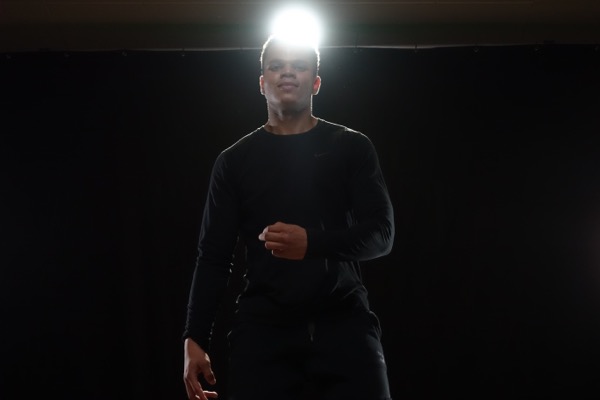 F2.8, 1 / 1000s, ISO 1600
F2.8, 1 / 1000s, ISO 1600
 F2.8, 1 / 1000s, ISO 1600
F2.8, 1 / 1000s, ISO 1600
![]() F2.8, 1 / 80c, ISO 125
F2.8, 1 / 80c, ISO 125
 F4, 1 / 125c, ISO 400
F4, 1 / 125c, ISO 400
Sony Cyber-shot DSC-RX100 Compact Camera - Overview
Like it or not, I always needed a compact camera - even if I had both a SLR and a system unit (a mirrorless camera with interchangeable lenses). Just because even a fairly compact system camera could not be taken with you everywhere, and not in all cases, especially considering the fact that interchangeable lenses can be impressive in size.
On the one hand, in the modern world, when some smartphones are equipped with a matrix of as much as 41 megapixels, you can use a phone for these purposes. But on the other hand, practice shows that the quality, convenience, functionality and rate of fire of even the best camera phones are noticeably inferior to those of compact cameras, especially good ones. So without a compact camera - nowhere, I really need it very often, and I rarely go out without it.
The first compact camera I had was called the Pentax Optio S. He was very small, literally with a credit card in area, but he was tolerant at the same time. At least, it was possible to photograph everyday reporting on him. But there were many problems with it: inconvenient control, a very slow reaction, noticeable distortions at a wide angle, and the quality as such was clearly inferior even to ordinary soap dishes, especially in landscapes, architecture, portraits, and so on.
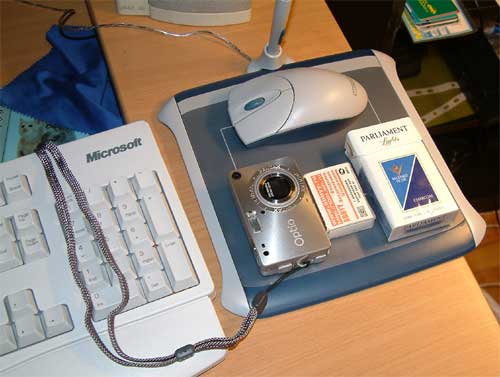
Pentax Optio S with friends
After that, there was a rather long break when I switched to Canon Powershot G series cameras - this was a compromise between compactness and quality: the cameras were very good (I had, as far as I remember, G6, G7 and G9), they shot well and had small sizes.
However, even then I still wanted to have a really compact device: both for the cases when these Gs turned out to be too big, and for the cases when these damn Gs broke, but they all broke for me - after some time they simply stopped turning on. The most exotic version with this camera (then there was G7) happened in the Maldives, where I was reluctant to drag a DSLR, and I decided that the Canon G7 could handle it. Well, after three days he died - he stopped turning on. And I had to photograph these stunning Maldivian views and sunsets on the HTC Touch smartphone - here are some cool sunsets.
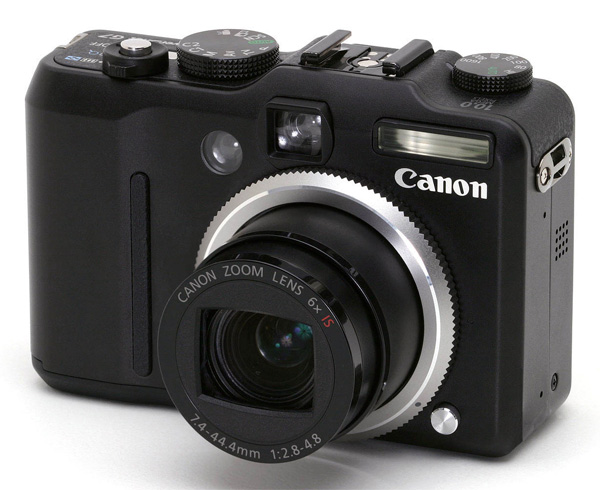
Canon Powershot G7
Some time after that, I decided to abandon the G series and then I purchased the only appeared Canon S95 - here is my note about it. The camera was very good, it plowed without any glitches, most Pentax Optio S problems were absent, however, the small size still made itself felt - both with the matrix and the optics.
Well, after that, when Sony released the Sony RX100 model (it is completely called Sony Cyber-shot DSC-RX100), I decided to try it in work, because the camera was very praised, and its characteristics were impressive.
This test camera was provided by my old partners - the online store "Yulmart", for which many thanks to them and that they were healthy!
I was in no hurry to write a review of this camera, because I wanted to test it properly. The camera traveled with me to Spain and other European countries, I carry it almost always with me in my bag in case I suddenly need to take something off, so the experience turned out to be solid, about six months.
So, the compact digital camera Sony Cyber-shot DSC-RX100.
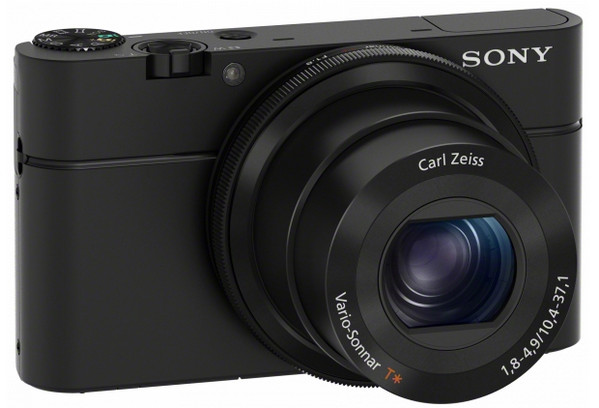
Sony Cyber-shot DSC-RX100
Specifications
Type of - compact digital camera with a non-replaceable lens
Matrix - Exmor CMOS, type 1.0 (13.2 × 8.8 mm), 20.2 Mpixels, crop factor - 2.7
Picture Format - JPEG, RAW (5472 × 3648)
Photosensitivity - ISO 80-6400
Excerpts - 30 - 1/2000 s
Flash - built-in
Display - 1,228,800 pixels, 3 inches
Memory card - SD, SDHC, SDXC, Memory Stick Duo, Memory Stick Pro Duo, Memory Stick PRO-HG Duo
Interfaces - USB 2.0, HDMI
Battery - lithium-ion, NP-BX1, 1240 mAh, for about 300 shots
Dimensions - 102 × 58 × 36 mm
Weight - 240 g
Lens - aperture F1.8 - F4.9, focal lengths equivalent - 28-100 mm
Approximate price in Moscow - 24-25 thousand rubles
We will not discuss briefly, as usual, technical specifications now, because there are many subtleties that require detailed discussion: this is the matrix, the lens, the price, and other characteristics. We will talk about this later in detail.
Delivery and assembly
The camera comes in a small dark box.

Options: device, battery, AC adapter, USB-microUSB cable, hand strap, shoulder strap, instruction manual.
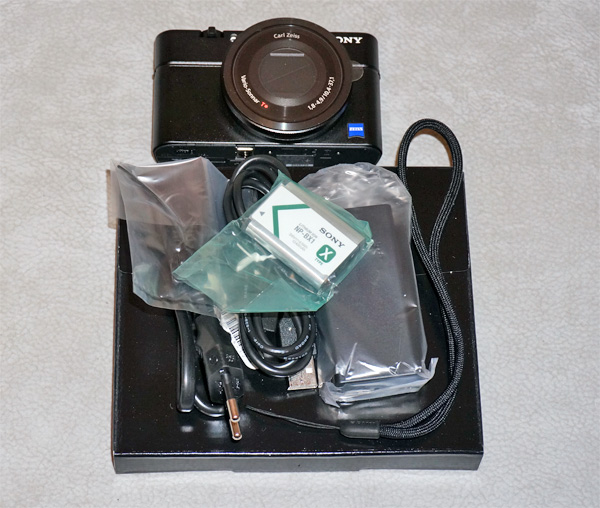
Appearance and features
Externally, the camera is not too different from some analogues - the same Canon S100.
Here is the Sony RX100.
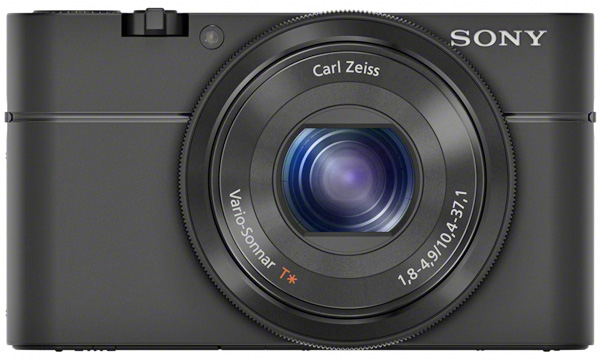
Here is the Canon S100.

The back of the RX100. Here, a large display immediately attracts attention. It is even larger than the NEX-6.
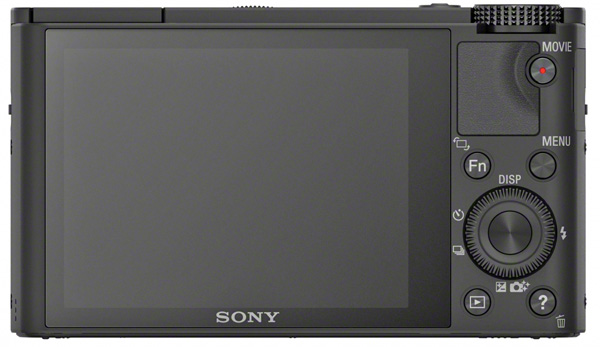
RX100 on top.

When you turn on the lens with a good zoom for such a compact zoom forward significantly.

Here is a top view with an extended lens.

The flash pops out automatically if it is required by the specified shooting settings. It looks as follows.

You have to remove the flash yourself - by clicking on it. When shooting people indoors, the flash can be directed to the ceiling - for uniform illumination - however, it does not fix this way, so you have to hold it with your finger.
The slots for the battery and memory card are located under the bottom cover, which is locked with a special latch: it needs to be moved to lock / unlock by hand.
The card is inserted and removed freely (unlike some other Sony models).
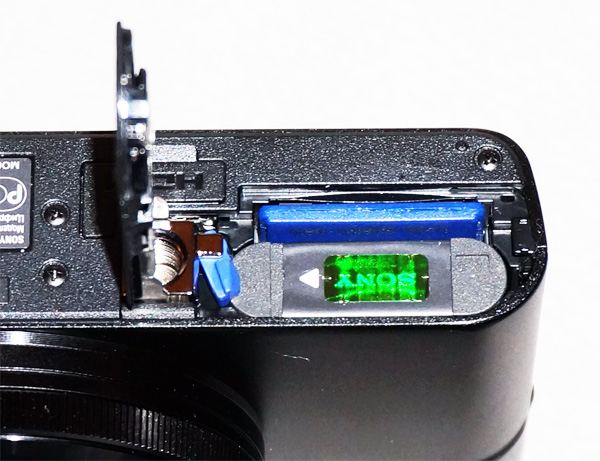
By the way, the plastic cover that closes the latch is very flimsy and is attached to the latch with a microscopic screw. Under normal conditions, it is unlikely to fall apart, but when my camera accidentally fell out of my bag, the overlay did not survive. True, nothing happened with the camera, and you could continue to use the latch calmly. Just the view is not so beautiful. But then the memory card is now removed and inserted without opening the cover, which is also valuable.
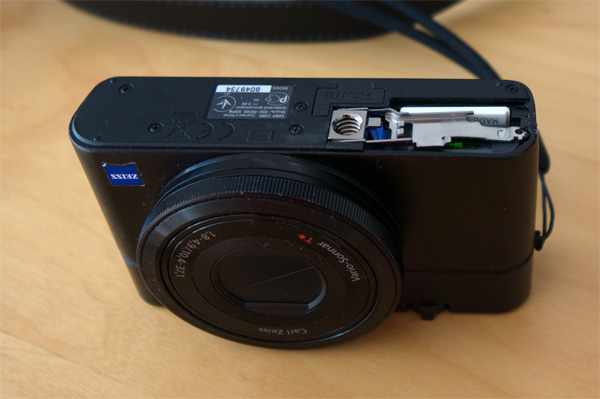
The camera supports EyeFi technology, so you can put the appropriate cards here to overtake your photos via Wi-Fi to your computer.
On the right side at the top under the folding cover is a universal output for USB, HDMI, Micro USB, Micro HDMI, PAL video output. It looks like microUSB, for all other types it requires special adapters that are not included.

What is very nice, the battery is charged through this universal output, as is done in older Sony Alpha NEX models.
Build quality, as usual with Sony, is excellent. The camera is enclosed in a very high-quality black steel housing; a special rubberized plastic overlay is made under the control gear wheel, on which the thumb rests very conveniently.
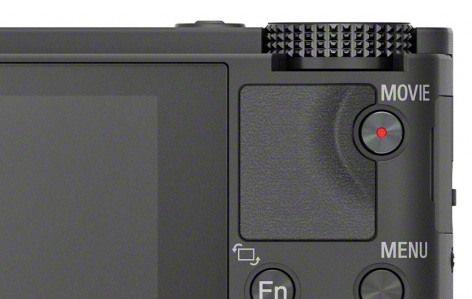
Of course, there is no mention of the "smartness" of SLR cameras here, but the camera is quite good in the hand. In my opinion, it is most convenient to use it with a hand strap, through the loop of which you need to put your hand through: so the camera will not accidentally fall out of hand.
What can be noted from the features? There is no "hot shoe" for an external flash - due to its compactness. There is also no viewfinder - you need to rely on a 3 "screen with a resolution of 1.23 Mpixels.
But this is not a problem. Landing for an external flash for such a small camera, in my opinion, is not needed at all (especially since there is a built-in flash), and the viewfinder is not really needed in this case either: the display on such cameras is enough. In addition, it turned out that the display behaves perfectly even in very bright sun: the image was bright and perfectly distinguishable. It turned out that special WhiteMagic technology is used here, thanks to which the display in the sun does not "fade" at all.
Matrix
The matrix installed here deserves a separate discussion. An Exmor CMOS measuring 1 "(13.2 × 8.8 mm) with 20.2 MP is more than good for such a compact camera.
Here on this very clear plate from the Dpreview website you can clearly see the aspect ratio of the matrices of various cameras, especially in relation to one of the RX100's competitors - the Canon S100.
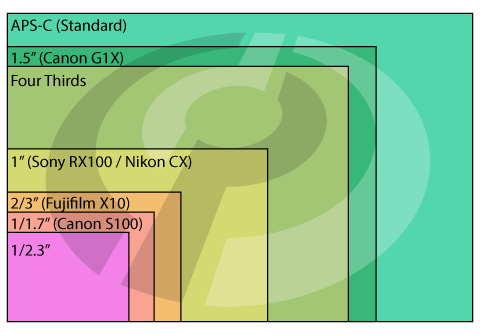
Lens
A very high-quality Carl Zeiss lens is installed here with an equivalent range of 28-100 mm, and an excellent aperture for such a compact aperture of 1.8 at short focus and 4.9 at long.
Control
Camera control. At the top there are: a power button, a shutter button with a zoom lever (when shooting and viewing) and a shooting mode dial. Unlike the Sony Alpha Nex-6, there is no second gear disk under the shooting mode dial, however, there is a gear ring around the lens that performs approximately the same functions: it not only functions as a zoom, but also changes the settings for various shooting modes.

Shooting modes displayed on the mode dial.
Shooting modes
The shooting modes here are slightly different from the NEX-5N. Here is a list of them with explanations.
1. Supercar or smart car
Fully automatic mode, in which the shooting scene is determined (as in automatic mode), all parameters are configured plus the camera can include auto-HDR.
2. Auto mode
The camera itself determines the appropriate shooting scene and turns it on.
3. Scene selection
Manual setting of the shooting mode from the following options: portrait, eliminating motion blur (in low light), sports (fast moving objects), pets (cats, cats!), Gastronomy (the most favorite item of bloggers), macro (shooting at close range) , landscape, sunset, night scene, twilight with hands, night portrait, fireworks, high sensitivity (shooting in low light conditions).
4. Panorama
A panoramic image that is created by shooting and automatically gluing several frames. Through the menu, you can set the panorama size (standard or wide), using the gear on the lens before shooting, you can choose one of four directions for creating a panorama: left, right, up, down.
5. Manual
Completely manual mode in which all parameters must be set independently. The image on the display here is shown in LiveView mode: the image is displayed as it should turn out in the picture. That is, if, for example, you incorrectly selected the exposure value and the frame is too dark, it will be just as dark when viewed on the display.
6. Shutter Priority
Setting the shutter speed, the aperture will be selected automatically.
7. Aperture Priority
Aperture setting, shutter speed will be selected automatically.
8. Software Auto
Here the shutter speed and aperture are set automatically, but their ratio can be changed manually by changing the aperture with a gear wheel, you can also configure various other parameters (ISO and so on).
9. Video
Despite the fact that you can turn on video recording at any time with the Movie button, you can set “Video” on the mode dial to choose one of four shooting settings: automatic selection of parameters, aperture settings for changing the depth of field, exposure settings, manual exposure.
10. Manual with predefined settings
Here you can set up to three profiles with settings to quickly call them up for shooting.
Control buttons on the back cover
The following controls are located on the back cover.
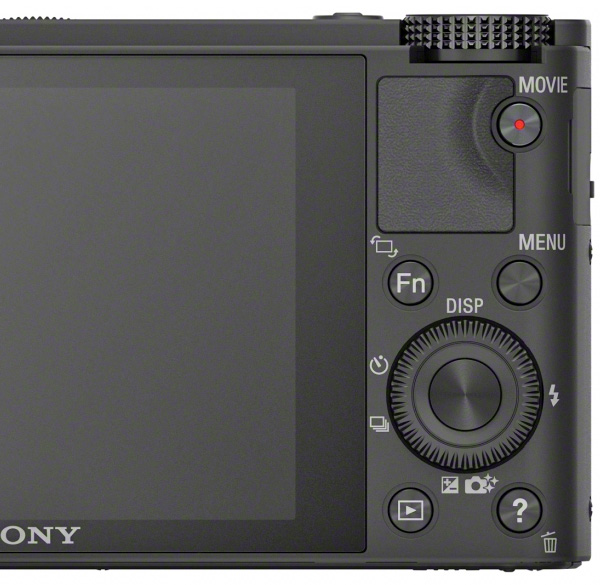
1. Movie (video)
Button to instantly start video recording. It is located well: on the one hand, you can’t accidentally press it, on the other - if necessary, you can feel and press it very quickly.
2. Fn - function button
The traditional button for Sony devices, on which you can hang up to seven functions you need. Five functions are installed by default, but you can change them at any time, as well as add a couple more. The default settings are: exposure compensation, ISO, white balance, DRO-HDR, special effect.
3. Menu
Call up the menu of various settings.
4. Control wheel
Standard control wheel: a rotary gear disk, four buttons on the disk with its own functions, a central button. By default, when shooting with the center button, the focus tracking mode is turned on, well, it also performs the confirmation function in the menu (the other four buttons act as cursors). Top button on the wheel - display settings. Right - flash settings. Left - drive mode and setting a delay timer before shooting. The bottom one is exposure compensation and tuning of any parameters in automatic modes.
5. Play
Media playback mode.
7. Help and Removal
Calling up help (very detailed and useful in many cases), this button also works as a “delete” command while viewing media.
That's all the controls.
By the way, if you look closely at the Sony RX100 and Sony NEX-6, you will see that their controls are very similar in many ways.
Here are the top controls.
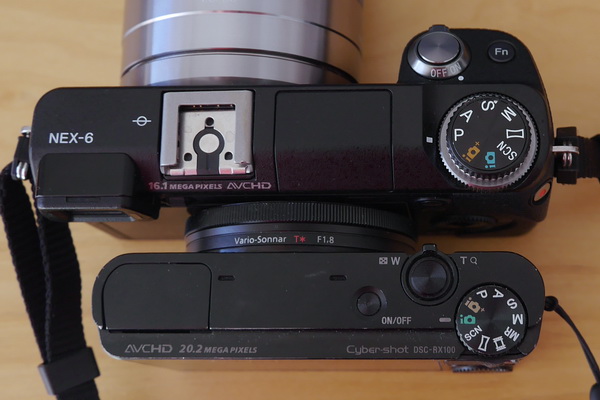
Here are the back elements.
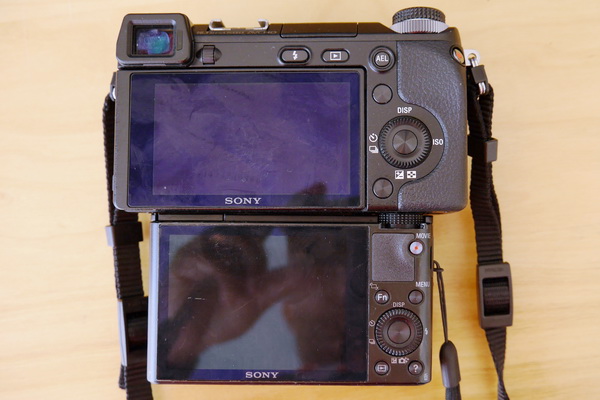
What about the handling of the Sony RX100? In general, it’s not bad. Even decently, given the compactness of the camera. Now I usually shoot in RAW in P mode with setting various parameters for the current situation, so quick access to many settings is extremely important for me, and first of all: shutter speed and aperture ratio for the first or second parameter, ISO, focus mode, HDR on, exposure adjustment, image quality (for switching in certain cases from RAW to JPEG). So, here access to all these parameters is made quite easy, especially if you configure a functional button for yourself.
Well, in my opinion, the work in automatic modes is also very competent, because for people who understand what and how they want to adjust to certain shooting conditions, there is a wide field of settings for the depth of field, brightness, color temperature, color intensity, processing effects.
Also, the settings are facilitated by the good information content of the data on the display. We will talk about him in the next section.
Display data
In the mode of full display of information, the display shows almost all the settings that can be changed, as well as information about exactly what both rotary disks are currently controlling: on the lens and on the back cover.
Here is the information on the pre-installed SCN with Macro mode. A special icon indicates that if the shutter speed is too slow (1/30), it is better to use a tripod.
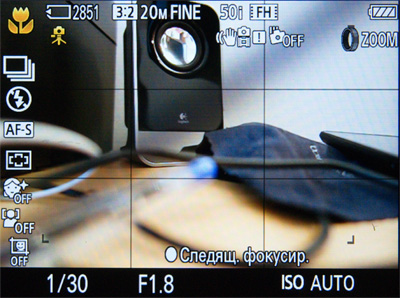
But the program mode - see how much more information and, accordingly, settings are there?
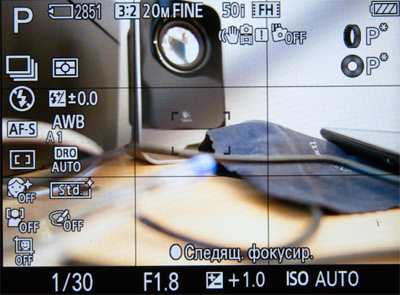
The most ascetic mode with a minimum of information.
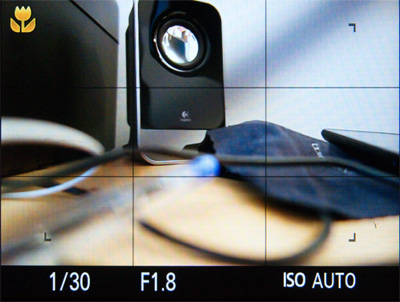
The included digital level, which, in my opinion, is of little use, as it works, to put it mildly, is crooked.

Visual mode with a ratio of shutter speed and aperture.

Sony’s traditional visual option for switching shooting modes with any background information about what this or that mode is.

Switching values \u200b\u200busing the Fn button: a list of parameters appears below (I remind you that you can set arbitrary options up to seven pieces there), between which you can move the cursors, and from above, a specific parameter is switched by a disk on the back cover.

Parameter call by cursor keys: switching values \u200b\u200bis also done by cursor keys.

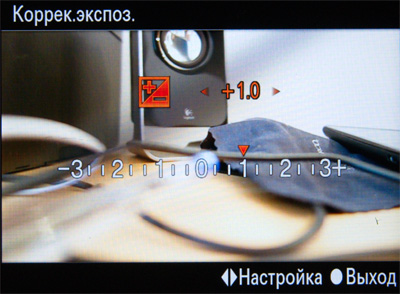
In a review, I came across complaints about the camera menu - they say it’s not particularly convenient. In my opinion, complaints can be made only to the linear arrangement of the upper bookmarks: in order to go, for example, to the settings tab, you need to go through all the bookmark items in the left or right in sequence. The rest of the menu is quite convenient: each parameter is divided into groups whose items fit on one screen, so there is no scrolling down. The items are simple and straightforward, the settings there are quite flexible. Let's get to know them.
Image sizes are offered as follows: 20, 10, 5 megapixels and VGA. Formats: 3: 2, 16: 9, 4: 3, 1: 1. Quality: RAW, RAW + JPEG, high (high-quality JPEG), standard (JPEG).
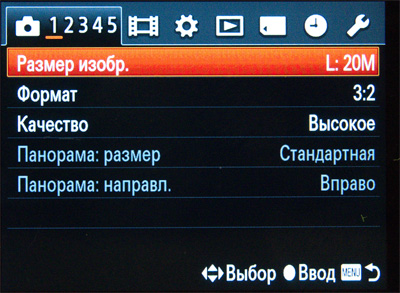
Sony traditional options: soft skin effect (for portraits), face / smile detection (you can register a specific face on the camera, and when the face appears, it will focus only on it; you can also set smile recognition, then the camera will wait when a smile will appear on a specific face), portrait auto-cropping (it works quite crookedly, it’s better not to include it).
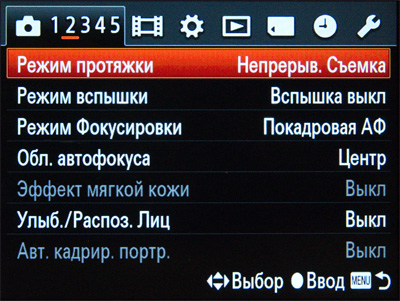
Creative styles relate mainly to adjusting color and brightness. For example, bright style, landscape style, portraiture and so on. All these modes are somehow connected with predefined shooting modes (portrait, landscape and others).
The effect of the picture is a special image processing after shooting. In my opinion, it makes no sense, it is always easier to process a finished photograph on a computer.

It is better to turn off the digital zoom - then you can always crop on a computer. Noise reduction lasts. Exposure - very useful for long exposures. Noise reduction of high ISO can also be included, but in reality it does not save much from high ISO. SteadyShot is a very useful image stabilization feature when shooting. By the way, it works very, very well, relevant for slow shutter speeds and large zoom.
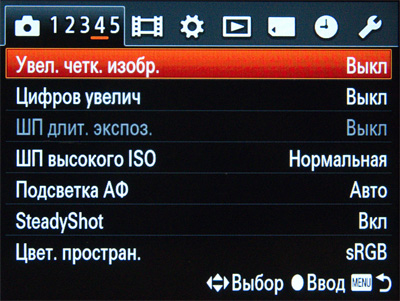
Sony has traditionally installed a useful and detailed help system in cameras. You can turn it on here to get tips on shooting. This system is in Sony NEX, and it is also included in the RX100.
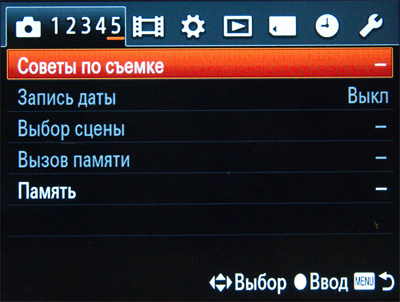
Video shooting options.
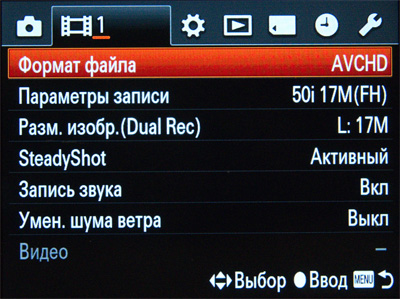
Red-eye reduction is best turned off - this is a double flash operation, which actually helps a little. Easier then remove the effect manually. Grid lines are labels on the display that help you frame your shots. I always use 3x3, there is also a square grid, square with diagonals. Auto review - frame output immediately after shooting. DiSP button - setting the information that appears on the display with the DISP button.

Control ring - here you can select the function that the control ring will switch. Button "Function" - setting the parameters that appear on the Fn button. Well, there you can also customize the central button, left and right (for example, I remove the flash and pull modes from the right and left buttons, put the ISO and focus type there, and, on the contrary, I take the flash and pull settings to the Fn button) .
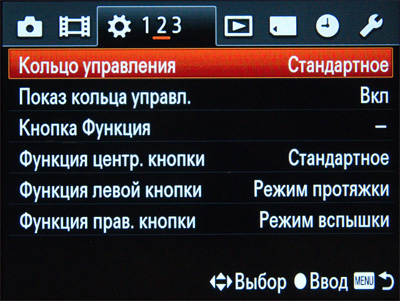
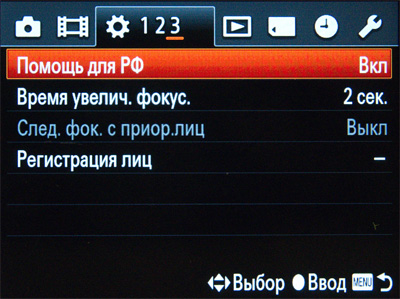
View Options.
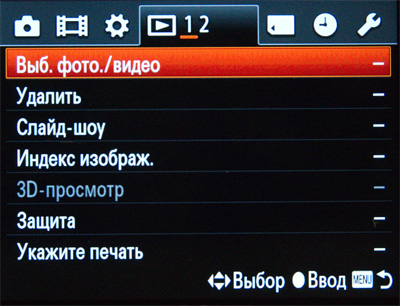
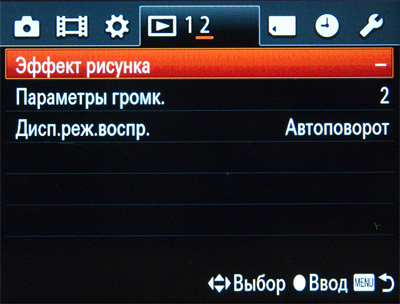
Work with a memory card.
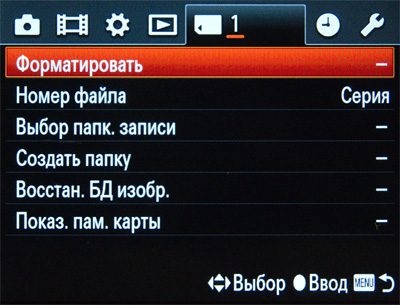
Date-time settings.
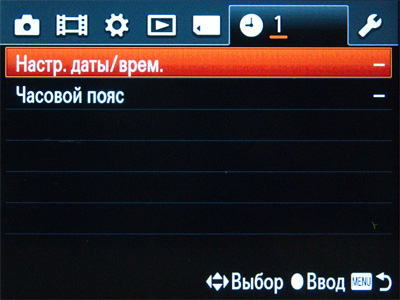
General system settings. Energy Saving Start Time - Turns off the device when inactive.
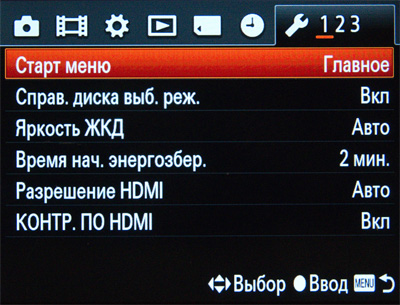
Here you can turn off generally sound signals, which I usually do: then the camera becomes completely silent.
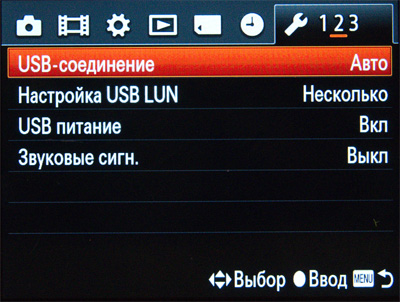
The drop sensor had to be turned off: it worked several times when the camera was just lying in a bag, and at the same time the device had to be turned off and on again.

Well, like all the settings.
Features at work
The camera turns on not particularly fast: the lens should extend out of it, the display will turn on. From the moment you press the power button to the first shot, two seconds elapse.
But the shutter works very quickly - the frame is taken almost instantly.
Burst speed may depend on the speed of the memory card. On a high-speed map in a series (JPEG), 12-13 shots are taken, then the buffer ends and the speed drops to 2-3 frames per second (waiting for recording to the card). In the RAW + JPEG series, six frames are obtained, then the shooting speed is slowed down by recording to the card.
Autofocus is fast and clear. There are problems when focusing on homogeneous, not too contrasting objects, but this is a common thing in general for all cameras.
A separate focus mode for macro photography is not provided, but if you do not need a large zoom, then objects located somewhere in two to three centimeters are quietly shot at a wide angle.
The display is excellent: bright, clear and you can easily use it even in direct sunlight.
The battery in normal mode (without flash in JPEG) is enough for about 300-320 shots. For such a crumb, this is normal: the Sony Alpha NEX-6 battery lasts exactly the same amount.
And now - examples
Well, now let's see how this camera shoots. I shot them a lot, so I tried to upload pictures taken in completely different conditions. (All photos are clickable, in the enlarged photo there is a scrolling frame by frame back and forth.)
Photos were not processed in any way, maximum - the horizon was getting better.
First, a bit of cloudy weather. In Spain, there was stress with this matter, so I had to go to France, to Nice. The bottom two frames were shot during light rain.
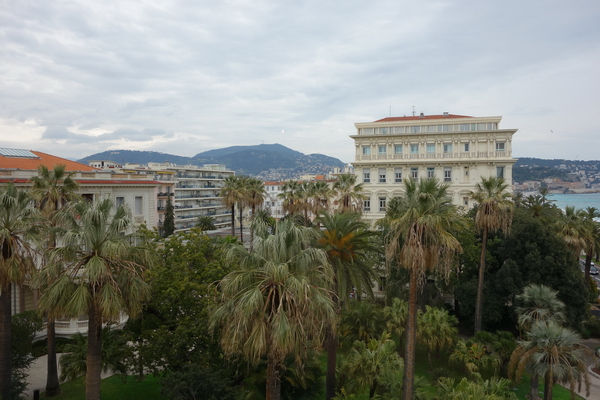
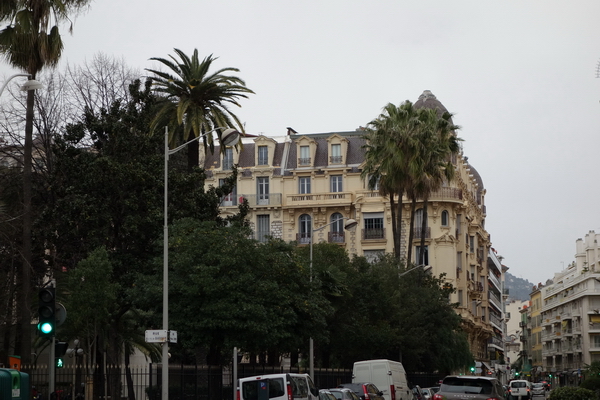

Sunny weather is the sea.
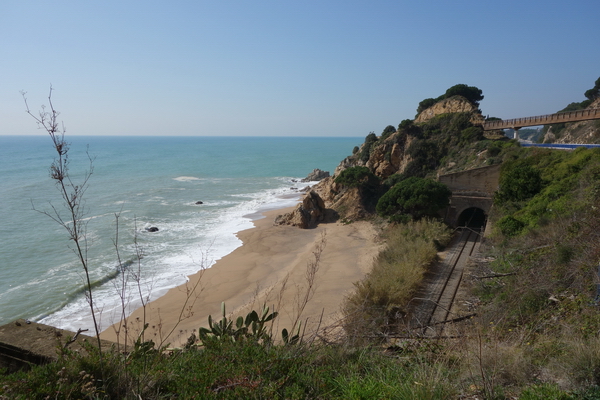

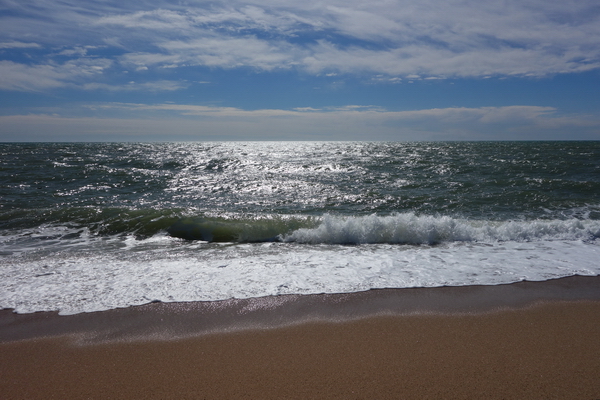
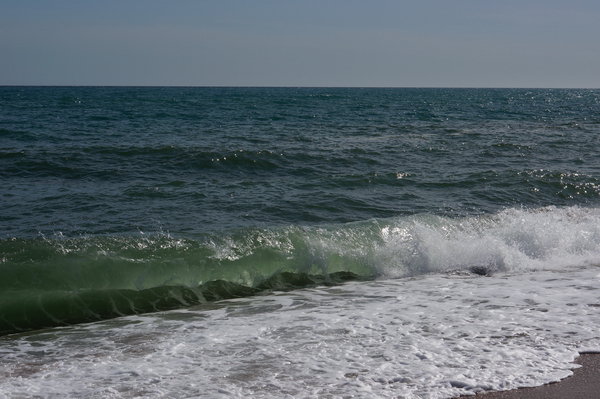
Panorama. By the way, panoramas were traditionally overexposed; exposure was necessary to be made when shooting.

Another panorama. This time is normal.

Mountains in sunny weather.

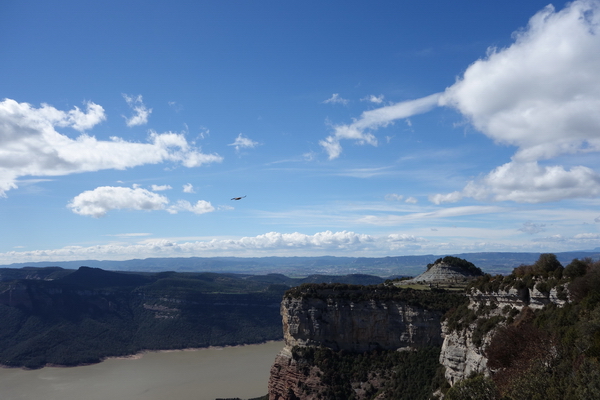

Another overexposed panorama.

Under the wing of an airplane.
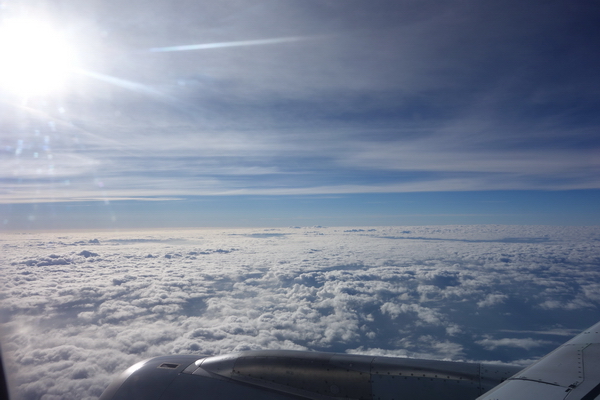
Exhibition.

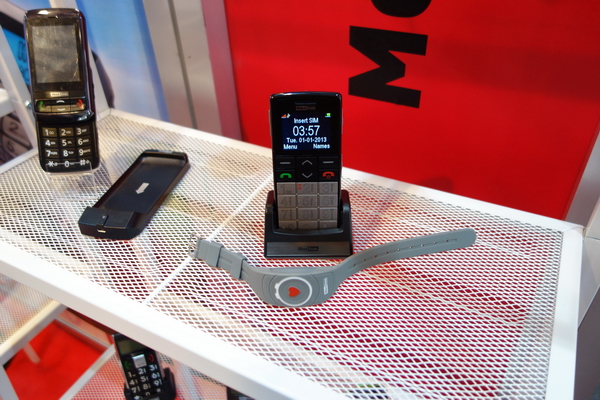
Premises.

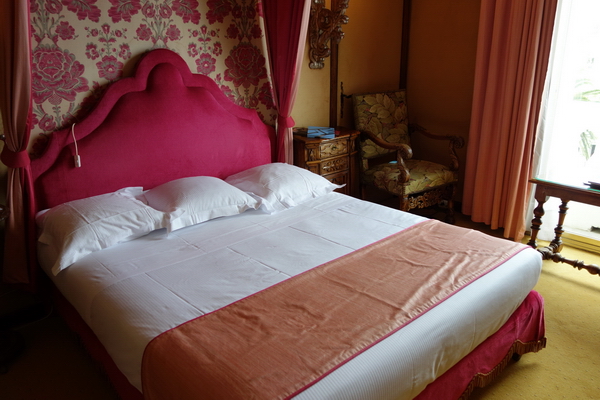
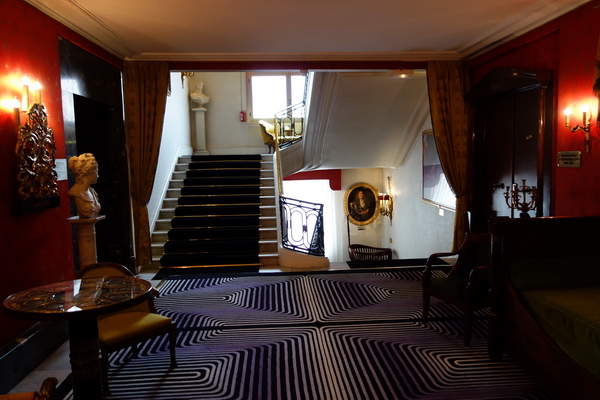
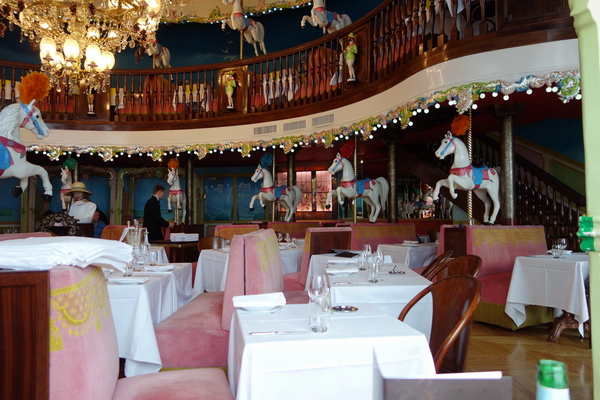

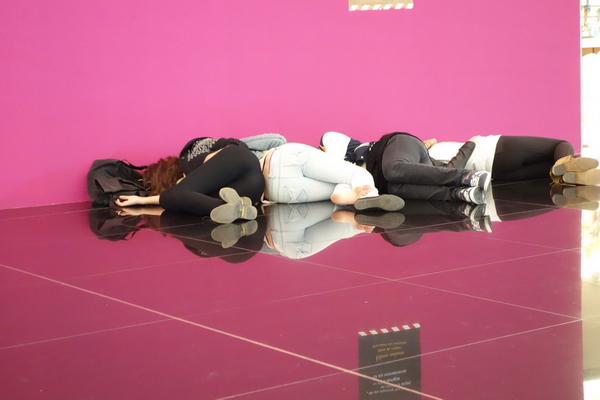
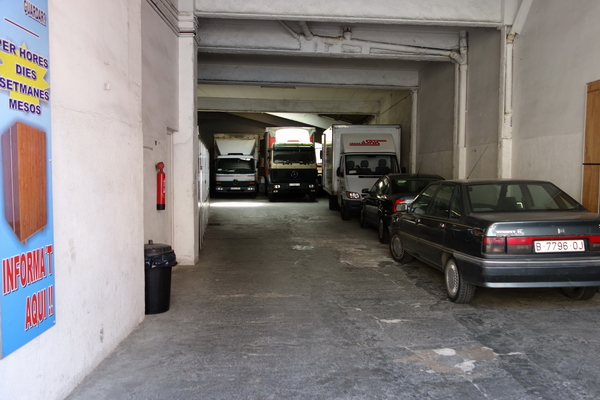
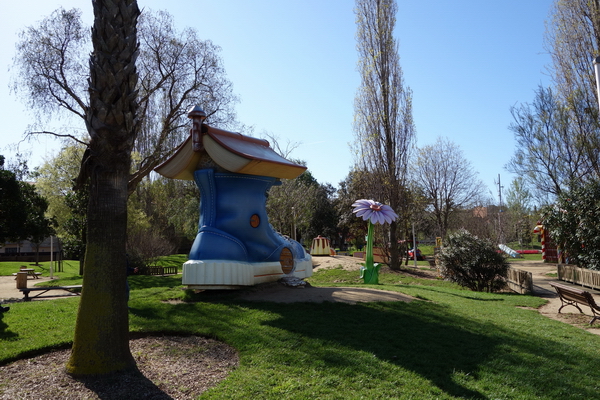
The same in the city.


HDR work.
Normal shot.
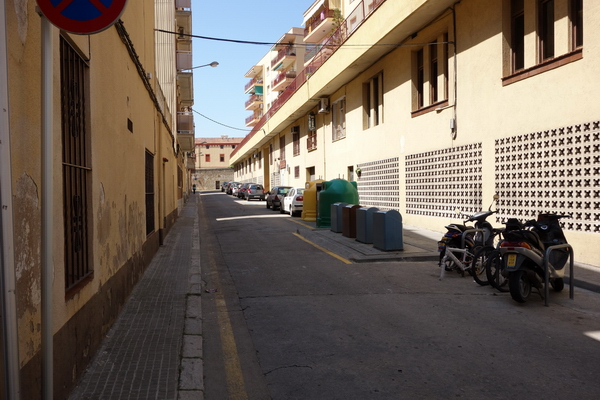
He is with HDR turned on.
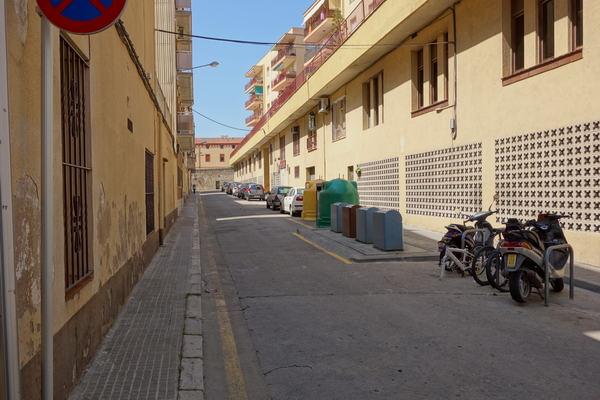
We play by focusing. Background.

Foreground.
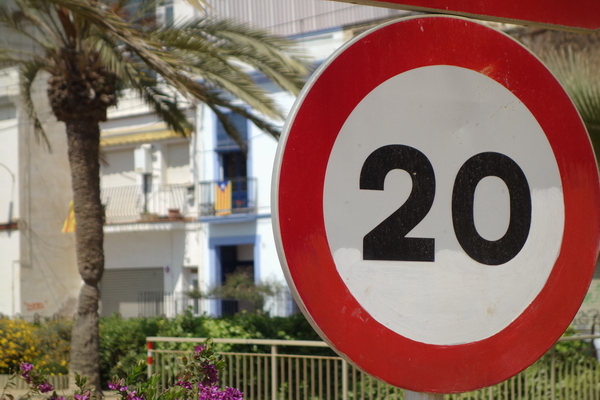
Long focus, focus on the midline.

Focus on the front line. In general, we can say that the blurriness in the background is not bad if you shoot close enough.

Poor lighting, different ISO.
This is ISO 1600. Decent.
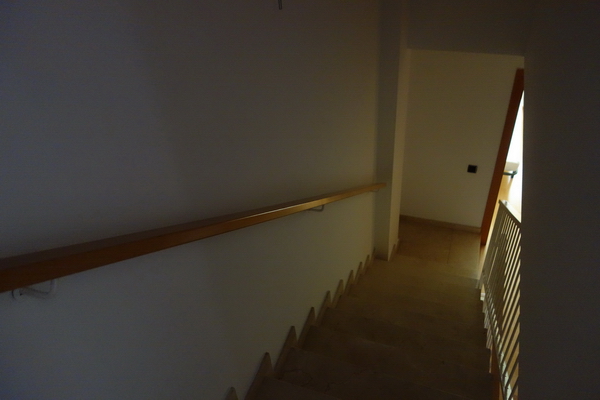
ISO 3200. Tolerant.

ISO 6400. This is, of course, pornography.
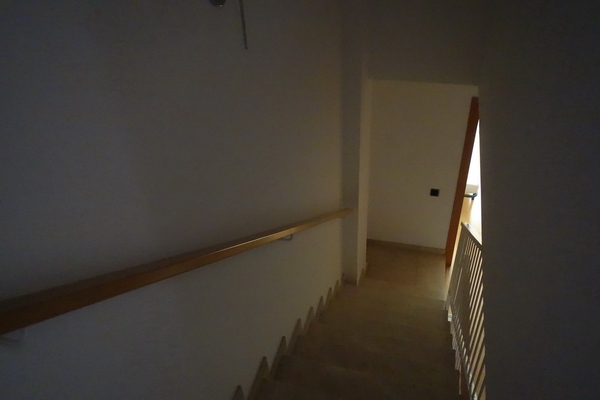
In general, up to 3200 takes off tolerably. Night shots are mainly taken at ISO 800-1600 - they look good.
Macro - short focus, as close as possible.
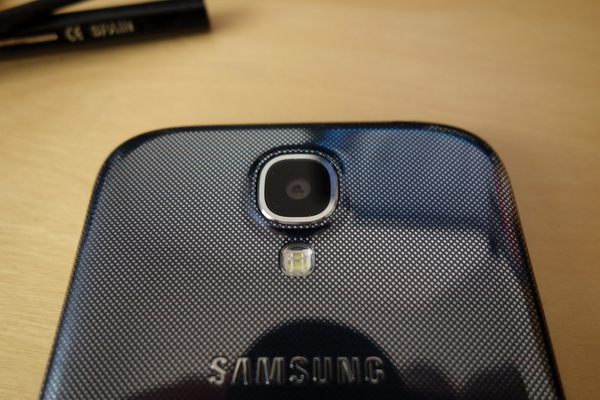
Well, the video demonstration: shooting during the day on the street and at night in very poor lighting.
findings
This is the best compact camera I've ever had in my hands. Of course, I can’t compare it with the whole spectrum of ultra-compact cameras, but, let’s say, the very decent and quite expensive Canon S95 shot much worse. Here it could be only a backup option: a reporting camera lying "just in case" in your pocket.
With the same camera you do not feel inferior in any case: it shoots very cool, and in a variety of conditions.
Well, yes, of course, it is clear that in any case, it will not be able to completely replace the SLR (system camera) due to certain restrictions on non-replaceable optics. But, let's say, for my standard blogging photo tasks, this camera covers up to 80-90 percent, which is very, very cool.
Often, users make complaints about the price of this camera: they say that if it cost not $ 650 (the price in the States), but at least $ 300-400, then, they say, it would be a camera for all cameras. The claim, in my opinion, is not entirely competent. Find a camera of the same quality for $ 300-400 - then you can talk about this topic. But cameras for $ 300-400 have a different sensor and a different lens. Therefore, this camera is much more expensive, and now everyone decides for himself: can he afford to pay for quality or is it better to buy something cheaper, but worse.
In my opinion, the camera is worth the money. I well remember that at one time I bought the same Canon S95 for very comparable money (it cost somewhere in Moscow $ 650). And this Sony RX100 is clearly better in quality.
In general, I liked it very much, and now I constantly carry (carry) it with me. This does not mean that while traveling I don’t take a system camera with a pair of interchangeable lenses (at the moment this is also Sony - Nex-6), however, in situations where for some reason you don’t want to take a second camera or don’t Maybe this camera does an excellent job of its tasks. I am very pleased with her.
Premium Compact Camera
Sony Cyber-shot DSC-RX100 IV
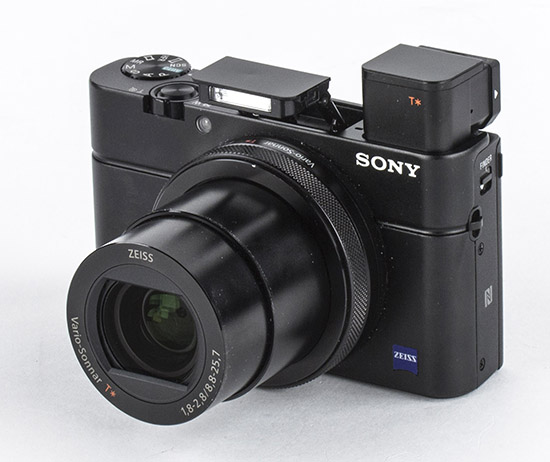
If I am not mistaken, the first Sony Cyber-shot DSC-RX100 pretty soon got the nickname "ryksa", borrowing the nickname from the not weak Mazda RX-8. Maybe, of course, the previous model of the Mazda RX-7, but I think we need to stop here, because there is a danger to dig to Ryksa Lorraine, but dig nothing.
Back to the Sony models. The Ryxa DSC-RX100 was, of course, a very notable phenomenon. Not everyone bought it, but I remember a lot of people who were going to do it. Or really wanted to. But the price was painfully biting: approximately 25,000 in 2012 for a compact camera. This is not an iPhone to lay out such an amount! But still, many wanted to buy, there were rumors about the camera that on an inch matrix it works wonders and shoots no worse than a SLR. And all because Sony gives the second-class matrices to others, but leaves it to the first ...
| Sony RX100 | Sony RX100 II | Sony RX100 III | Sony RX100 IV | |
| Announcement Date | july 2012 | june 2013 | may 2014 | july 2015 |
| Moisture and dust protection of the case | no data | |||
| Matrix | Exmor R CMOS, 20 MP, 1 ″ | Exmor RS CMOS 20 MP, 1 ″ |
||
| Lens | Vario-Sonnar T, f / 1.8-4.9, 28-100mm | Vario-Sonnar T, f / 1.8-2.8, 24-70mm | ||
| Minimum Focus Distance | from 5 cm in wide angle from 30 cm in the “body” position |
|||
| Sensitivity, ISO | 100 — 25 600 | 160 — 12 800 100 — 25 600 * |
125 — 12 800 80 — 25 600 * |
|
| Autofocus (with face detection) | contrasting | |||
| Screen | RGB, 3 ″, 1,228,800 dots, fixed | RGB, 3 ″, 1,228,800 dots, hinged | ||
| Viewfinder | not | option (electronic) | OLED, 1,440,000 dots, 100%, 0.59x | OLED, 2,360,000 dots, 100%, 0.59x |
| Burst Speed | 10 fps | 16 fps | ||
| Video | 1920 × 1080 50p | 3840 × 2160 30p | ||
| Stabilizer | optic | |||
| CPU | Bionz | Bionz x | ||
| Gate | 30 - 1/2000, mechanical | 30 - 1/2000, mechanical, up to 1/32000 electron. | ||
| Memory cards | SD / SDHC / SDXC, Memory Stick Pro Duo / Pro-HG Duo | |||
| Wi-Fi / USB / GPS | option / USB 2.0 / no | built-in / USB 2.0 / no | ||
| Battery Life (CIPA Standard) | 330 | 350 | 320 | 280 |
| Sizes, weight | 102 × 58 × 36 mm, 240 g | 102 × 58 × 36 mm, 281 g | 102 × 58 × 38 mm, 290 g | 102 × 58 × 41 mm, 298 g |
| Price | T-8270355 | T-10405658 | T-10846608 | T-12767152 |
Then the Sony Cyber-shot DSC-RX100 began to evolve - every year a new modification appeared. In the table above it is clearly visible that the newcomer appeared in each model. RX100 III received a new fast lens. With a smaller range of focal lengths, but with a wider angle (EGF \u003d 24 mm) and aperture f / 2.8 in the “tele” position. In addition, the third ryksa had a built-in OLED viewfinder and a more powerful Bionz X processor. And the fourth, electronic shutter, the ability to shoot 4K video and burst shooting up to 16 fps. But I had to pay for it: the battery life dropped to 280 frames according to the CIPA standard, and the weight increased to 298 grams. And the price has risen markedly. Dimensions of modifications, body design, ISO sensitivity range - all this did not change much.
We will not describe all the advantages of the new product, they can be found on the Sony website, there it is described in great detail and on the case about all the new features. And our business is to identify what we can identify in tests. In the end, video with super slowdown up to 40 times is important and fun, but Homo Photos (the person taking the picture) is most interested in noise and autofocus accuracy. Although some features of the Sony Cyber-shot DSC-RX100 IV are extremely interesting - for example, the ability to take photos with a resolution of up to 17 megapixels during movie shooting without negative consequences for the video.
| Main characteristics | |
| Case, protection | Metal alloy, no protection data |
| Lens | Vario-Sonnar T, f / 1.8-2.8, 8.8-25.7mm, equiv. focal length - 24–70 mm |
| Matrix | Matrix 20 MP, Exmor RS CMOS, 1 ″ (13.2 × 8.8 mm); conversion factor focal length - 2.73 |
| Photosensitivity | ISO 125 - 12 800, in advanced mode - ISO 80 - 25 600 |
| Focus control | Contrast Autofocus with Face Recognition and Eye Focus |
| Exposure management | TTL exposure control, multi-sector, matrix |
| Screen | 3.0 inches RGB, 1,228,800 dots, hinged. Viewing angle ≈170 °, frame coverage ≈100% |
| Viewfinder | Electronic, OLED, 2,360,000 dots, frame coverage ≈100%, magnification ≈0.59x |
| Image stabilization | In photo mode: optical. In video mode: intelligent stabilization (optical with electronic distortion compensation) |
| Shooting modes |
|
| Burst shooting | Up to 16 frames per second |
| Gate | Mechanical: 30 - 1/2000 s, electronic 30 - 1/32 000 s |
| File format | JPEG (Exif 2.30), RAW (14 bit, uncompressed), RAW + JPEG |
| Video | Maximum resolution 4K, 3840 × 2160 30p in XAVC format, Full HD shooting - possible in AVCHD ver. 2.0 |
| Memory | 1 universal slot: SD / SDHC / SDXC, Memory Stick Pro Duo / Pro-HG Duo |
| Power supply | Rechargeable Li-ion Battery NP-BX1 (≈280 frames according to CIPA standard) |
| Sizes, weight | 101.6 × 58.1 × 41.0 mm; 298 g (including battery and memory card weight) |
| additional characteristics | |
| Hot shoe | not |
| Built-in flash | yes, guide number up to 10.2 (ISO Auto) |
| Autofocus highlight | there is |
| Bracketing | By exposure, by white balance, by DRO (dynamic range optimizer) parameters |
| Interface |
|
| Wi-Fi / USB / GPS | Built-in module / USB 2.0 / no |
| Self-timer |
|
| Shooting Formats | JPEG, 3: 2 - 20 MP (5472 × 3648), 4: 3 - 18 MP (4864 × 3648), 16: 9 - 17 MP (5472 × 3080), 1: 1 - 13 MP (3648 × 3648) |
| Features |
|
The number of functions of the Sony Cyber-shot DSC-RX100 IV is very large. Some are visible in the passport characteristics, some we will meet in the next chapter, we will try not to miss anything interesting. But to cover everything is simply impossible. In addition, we will not dwell on the possibilities of video, as in the "Digital Video" section.
But the main thing that looms (especially if you trace the history of the development of Sony DSC-RX100 cameras):
- The manufacturer considers the design and construction of the camera successful, trying not to touch them (remember the joke about the programmer who told his son not to touch the Sun, if it works?).
- At the same time, the density of the design and installation of electronics grows, the camera becomes heavier, its energy consumption increases. This is partly due to the appearance of the viewfinder with a very high resolution, but only partly - the main screen settings have not changed, and the number of frames that the camera can take without the viewfinder has decreased.
- And, of course, everything possible was done to use the electronic camera filling in full. Of course, we will look at what the multilayer Exmor RS sensor is capable of, but its dimensions remained the same, their area is 3.6 times smaller than the APS-C, so it is difficult to count on low noise levels.
- Sony is trying to fix this drawback due to high-aperture optics, good stabilization, noise filtering. All these are old recipes, but Sony is trying to make a new one out of the old - if all the characteristics are raised by 10-15 percent, we will get a brand new product.
- In addition, the camera vector itself is directed towards the future. Most likely, the experience of communicating with smartphones will lead to the fact that a new generation of amateur photographers will treat the camera as another smartphone on which new programs can and should be installed (in particular, means of communicating with social networks). Which is simply obliged to communicate with a laptop and tablet via Wi-Fi. Which will push the consumer to video with a resolution of 4K, and receive commands from external devices through the channel of "tags" NFC.
- The fact that some of these technologies will remain niche or even sink into oblivion does not bother anyone. The future must be shown here and now. Even if the price of the camera increases slightly.
However, we will not make final conclusions, let's get to know more closely the fourth ryksa.
Construction, design, management
When we try on a DSLR or a large mirrorless mirror, we can talk about “grip” and “hand feelings”. In relation to Sony Cyber-shot DSC-RX100 IV (and many expensive compacts) such a conversation does not make much sense. Their case is just a “box”, except covered with a non-slip, “non-sweating” coating. Although to call such a device “soap box” the language does not turn.
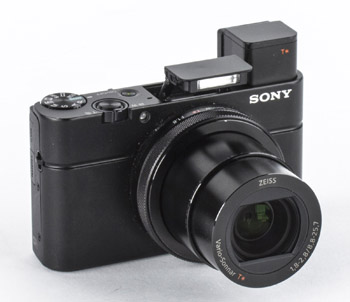 |
The telescopic camera lens in the "body" position extends strongly beyond the housing. In the off state, the camera covers the front lens with automatic shutters. |
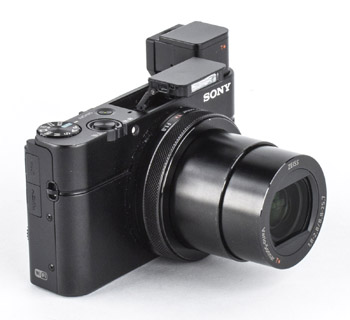 |
The most important function of the front panel is zooming. Either sharp using the upper lever, or smooth using the control ring (around the lens). In combination with the control buttons, the control ring allows you to quickly select the desired parameter. |
 |
The connectors are covered with a light (but reliable) cover. The Wi-Fi tag reminds that wires are not required today. Unless when charging the camera. Nearby we see the “Video” button and a piece of coverage under the thumb, which improves grip (still, the camera has some kind of grip). |
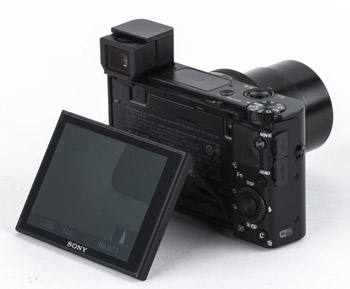 |
Here we can consider the design of the folding screen. It seems that the third model DSC-RX100 received a selfie screen (with a rotation of up to 180 degrees up for self-portraits). But the screen did not become a touch. Which, you see, is strange if the camera vector is directed to the future. |
 |
The control on the rear panel is traditionally not only for Sony compacts, but for compacts in general (premium, not lower). The multi selector is combined with the second control ring. The icons on the edges suggest that pressing the selector will cause settings: drive mode, select information on the display, flash mode and exposure compensation. The purpose of the Fn, Menu, Play, and Trash buttons is clear. Button "C" (custom) - in fact, one more function button to which you can bind your favorite functions. But its main purpose is to manage user settings. |
 |
From the port side we see the ejection lever of the viewfinder. And below is the NFC icon. I have no statistics on how much this technology is in demand. Some love and use it, others have tried it, they did not like it. Although the ability to establish a one-touch connection between the camera and smartphone is attractive. It is clearly seen here that the OLED camera viewfinder is not only ejected from the camera body, but also pushed back. The design is somewhat strange (it goes against the Japanese rule "Not everything is beautiful, but everything is beautiful"). |
 |
And this is how the external panel looks without ejecting the flash and the viewfinder. As you can see, when folded, the lens is almost completely retracted into the body and closed with automatic shutters. The control ring around the lens is a pretty handy tool. However, similar designs appeared before the first ryksa. |
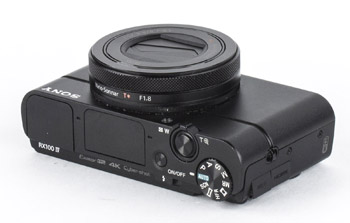 |
On the top panel, we have not yet marked the power button and the flash eject lever. And the main element of the top panel is the shooting mode dial, which provides a choice of:
|
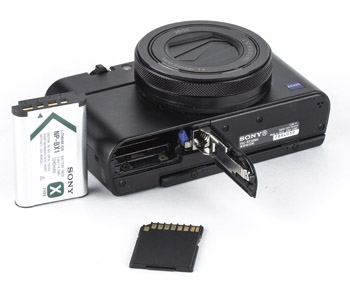 |
And finally, on the bottom panel we see the "budget" option for the location of the slots for the battery and memory card - in one bottle. Of course, this is not a desire to create a cheaper design, it is a desire for super-miniaturization. |
Let's make an intermediate diagnosis:
- Sony Cyber-shot DSC-RX100 IV camera with a very high density. Even higher than the previous representatives of the RX100 series. This is generally good, the compact camera still did not weigh more than 300 grams, but it uses up energy quickly: only 280 frames can be snapped off with a screen, only 230 with a viewfinder.
- Judging by the number of shooting modes and passport data, the number of functions of the RX100 IV is very large, but the external interface does not look overloaded. After getting acquainted with the menu, we will be able to judge how well the interaction of external control with the menu functions is organized.
- They don’t argue about tastes, but I heard the opinion of several photographers that the design of Sony cameras is not very successful. Both "by eye" and the sensations of "camera in hands." Maybe I just had no luck with the sample, so I simply have no right to insist on this point of view. And yet there are some obvious things. The ease of use of the RX100 IV viewfinder can not be compared not only to the viewfinder of a DSLR, but even to the electronic viewfinder of a mirrorless camera. For example, like the recently tested Fujifilm X-T10. True, this mirrorless and larger and heavier than the RX100 IV. Here the questions arise: “Is it necessary to chase the camera’s miniature in such a way if this is to the detriment of convenience?”, “Maybe it would be better not to push the viewfinder into the camera, but leave the option of the second“ ryks ”- a flash on the left, and in the middle“ a hot shoe "And the viewfinder as an option?"
These are just questions. I hope Sony knows what he's doing. And the market will give an answer to the actions of this not weak company. We will proceed to study the menu of the fourth "ryksa":
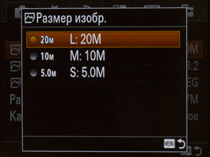 |
 |
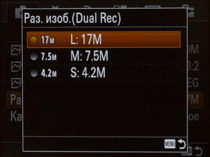 |
 |
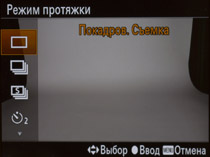 |
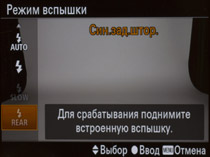 |
 |
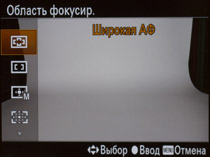 |
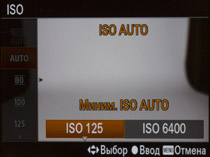 |
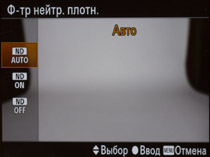 |
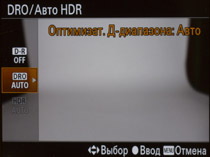 |
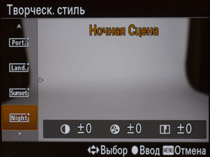 |
 |
 |
 |
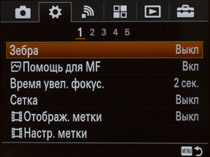 |
 |
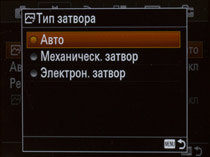 |
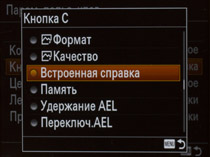 |
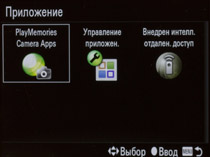 |
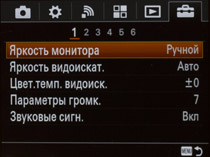 |
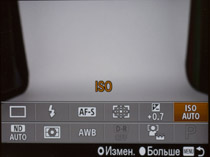 |
 |
 |
So, it is easy to notice that the functionality of the RX100 IV is designed for the advanced amateur. They just need to be in order to master the many possibilities, and not stay in the "green" automatic zone. Although even in this zone you have to make a choice: work in the usual “Intelligent Auto” or in “SuperAuto”. And to bring the camera into combat alertness (choosing the most popular functions, practicing techniques for switching from mode to mode, etc.), you need to know the photo business. Otherwise, most of the functions of the RX100 IV will not be in demand.
Sony has done a lot to fit the considerable capabilities of the RX100 IV into a relatively compact and lightweight body. But still, the thought of whether such a game is worth the candle has visited me more than once or twice. There are several mirrorless models that, together with a universal lens, provide almost the same functionality, but are equipped with a “4/3” or APS-C matrix. The case of which is slightly larger, but much more convenient to shoot, and the weight is more by 100 grams. And the price is more sparing. Unless the video in 4K resolution, these cameras do not write. But the demand for 4K today is dubious.
These “thoughts out loud” can be uttered after a capricious acquaintance with the fourth “ryksa”. Before moving on to “Competitors”, I repeat once again that I almost did not stop recording videos, because, as already mentioned, in our section “Digital video”.
Sony DSC-RX100 IV has no direct competitors, in terms of capabilities this camera does not compete with premium compacts, but with mirrorless cameras, and quite expensive ones. Therefore, we chose alternative options on the principle of "what can you buy for the same money (plus or minus 20 percent), relatively compact and immediately with a standard lens." And in the end we got this list:
| Sony RX100 IV and competitors | |||||
| Fujifilm X-E2 Kit |
Fujifilm X-T10 Kit |
Olympus OM-D E-M5 Mark II Kit |
Panasonic Lumix DMC-G7 Kit |
Sony DSC-RX100 IV |
|
| Matrix | 16 MP APS-C X-Trans II CMOS |
16 MP APS-C X-Trans II CMOS |
16 MP 4/3 ″ Live mos |
16 MP 4/3 ″ Live mos |
20 MP, 1 ″ Exmor RS CMOS |
| Lens | EGF - 27-84 mm |
Detachable, Fujinon XF09-55 mm F2.8-4 R LM OIS EGF - 27-84 mm |
Removable, Olympus ED 12-50mm f / 3.5-6.3 EZ EGF - 24-100 mm |
Removable, Panasonic 14-42mm f / 3.5-5.6 Aspherical EGF - 24-84 mm |
Fixed, Vario-Sonnar T f / 1.8-2.8 EGF - 24–70 mm |
| Autofocus | TTL Hybrid | TTL Hybrid | TTL Hybrid | TTL Hybrid | TTL contrast |
| Sensitivity | 200 — 6400 100 — 25 600 * |
200 — 6400 100 — 51 200 * |
200 — 25 600 100 — 25 600 ** |
200 — 25 600 100 — 25 600 ** |
125 — 12 800 80 — 25 600 ** |
| LCD screen | 3.0 ″ RGB 1 040 000 fixed |
3.0 ″ RGB 920 000 folding |
3.0 ″ RGB 1 040 000 hinged swivel, touch |
3.0 ″ RGB 1 040 000 hinged swivel, touch |
3.0 ″ RGB 1 228 800 folding |
| Viewfinder | OLED 2,360,000 ≈100%, ≈0.64x |
OLED 2,360,000 ≈100%, ≈0.62x |
TFT 2,360,000 ≈100%, ≈0.74x |
TFT 2,360,000 ≈100%, ≈0.70x |
OLED 2,360,000 ≈100%, ≈0.59x |
| Gate | fur. 30-1 / 4000 X-sync 1/180 s |
fur. 30-1 / 4000 X-sync 1/180 s electron. 1/2500 - 1/32000 s |
fur. 30-1 / 8000 X-sync 1/180 s electron. 1/320 - 1/16000 s |
fur. 60-1 / 4000 X-sync 1/160 s electron. 1 - 1/16000 s |
fur. 60-1 / 2000 X-sync N / D **** electron. 30 - 1/32000 s |
| Built-in flash | vedas number number 7 (ISO 200) |
vedas number number 7 (ISO 200) |
not **** | vedas number 9.3 (ISO 200) |
vedas number up to 10.2 (ISO Auto) |
| Stabilizer | in the lens | in the lens | matrix | in the lens | matrix |
| Burst shooting | ≈7.0 fps | ≈8.0 fps | ≈10.0 fps | ≈7.0 fps | ≈16.0 fps |
| Wi-Fi / USB / GPS | inline USB 2.0 not |
inline USB 2.0 not |
inline USB 2.0 not |
inline USB 2.0 not |
inline USB 2.0 not |
| Video | 1920 × 1080 60p |
1920 × 1080 60p |
1920 × 1080 60p |
3840 × 2160 30p |
3840 × 2160 30p |
| Battery reserve | 350 frames | 350 frames | 310 frames | 360 frames | 280 frames |
| Sizes, weight | 129 × 75 × 37 350 g |
118 × 83 × 41 381 g |
124 × 85 × 37 496 g |
125 × 86 × 77 410 g |
102 × 58 × 41 298 g |
| Lens Dimensions and Weight | ∅65 × 70, 310 g | ∅65 × 70, 310 g | ∅57 × 83, 211 g | ∅61 × 64, 165 g | — |
| Estimated price | T-10548232 | T-12562537 | T-12114519 | T-12705460 | T-12767152 |
|
* Extended ISO range, without the ability to shoot in RAW. ** Extended ISO range. *** Sony resources are not indicated. According to unverified data - 1/800 second, in relation to the electronic shutter. **** The camera comes with a compact external flash, Ved. number 12.9 (ISO 200). |
|||||
After viewing the table, Sony’s calculation in the creation and development of the RX100 series becomes clear:
- The size of the sensor is chosen to be the same as that of Nikon mirrorless cameras, two times smaller in area than Four Thirds.
- Nikon mirrorless mirrors do not suffer from high-quality images, but Olympus and Panasonic cameras equipped with Four Thirds matrices give decent quality comparable to what APS-C devices give (although they are one third smaller in area).
- So, if you make some effort, you can achieve good results from the inch sensor.
- To do this, it is necessary to equip the camera with a fast lens, which will give a gain in 1 or 2 EV stages. And under equal conditions, the RX100 will reduce sensitivity by 1 or 2 steps.
- In addition, the Exmor RS CMOS matrix is \u200b\u200bsuperior to its analogs and makes less noise. This gives some more gain.
- We will create an expensive, but very compact and lightweight camera. Its capabilities will be - like advanced mirrorless ones. The optics will be fixed, but very high quality.
- And our camera will have no analogues.
The calculation is quite robust. But a considerable price is drawn for the consumer. Other manufacturers are unlikely to reach for the Sony RX100; this is a niche product, let’s say. But, if the calculation is correct, and the camera, indeed, produces pictures of decent quality, it will have its own consumer.
So now we just have to check how high (or low) the quality of images gives Sony DSC-RX100 IV?
Image Quality - Resolution and Noise
Unfortunately, I did not find the exact text of one post on the forum, but its meaning was this: “Also, they discovered America. Compare two cameras. The matrices are the same size, but one resolution is higher, the other lower. And they got a “result”: it turns out that if the resolution is lower, then the matrix is \u200b\u200bless noisy. Who does not know this !!! ”
Yes, everyone knows that. A priori, you can make a diagnosis (that is, estimate how high the noise is) by the size and resolution of the matrix. But if you follow this logic to the end, then it turns out that all the matrices of the same size and resolution are the same noise, but this is not so. A good proof that the matrices are different, we will see in this test. Although (everyone also knows this) even completely identical matrices in different cameras give different results. Even at the RAW level, the result depends on the electronics and software, and at the JPG level with the noise filter turned on, this dependence is even higher, since the picture is processed by noise reduction.
| Sony RX100 IV, RAW | Sony RX100 IV, JPG |
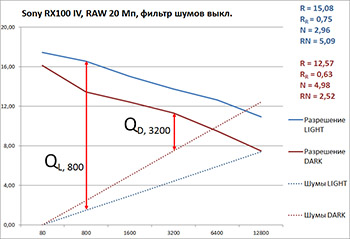 |
 |
To summarize, to lay out the pros and cons of the lens is easy. Features Zeiss Vario-Sonnar T 1.8-2.8 / 8.8-25.7 - almost continuous pluses. High resolution, perfect “geometry”, low “chromaticity”. The efficiency of the stabilizer, although not outstanding, is normally high by today's standards.
The only thing the lens cannot boast of is the resolution at the edge of the frame in a wide-angle position. But this, by and large, is not the most important characteristic. The main thing is that in the “portrait” and “large-scale” focal length areas the resolution is high both in the center of the frame and on the edge.
Features Sony RX100 IV
Autofocus operation in low light
Sony presents the Sony DSC-RX100 IV autofocus: “The camera implements fast intelligent autofocus with a high response speed and contrast autofocus to increase focus accuracy. This system is based on the autofocus system implemented in cameras of the Alpha 7 series ”.
It’s clear that the manufacturer always praises its developments, but in this case we decided to put a quote, because the Sony DSC-RX100 IV contrast auto focus capabilities pleasantly surprised us:
As you can see, the Sony DSC-RX100 IV has a phenomenally high contrast AF speed. The camera completed the task of our test in 29 seconds with a small “tail” in low light (−1EV) and very low light (−2EV). This is a result that displays contrast AF at the phase - speed level. The focusing accuracy is not ideal, but relatively high. Before Sony DSC-RX100 IV, the records set by several cameras were about 60-66 seconds per test:
By the way, here you can recall one more comment on the forum. This was a dissatisfaction with our technique for assessing the quality of autofocus in low light, expressed in approximately these words: “Objects are removed in the darkness with a tiny depth of field, a lot of marriage is obtained and some conclusions are made on this heap”.
Dear friend. You almost understood everything correctly, the technique is structured as follows:
- All cameras are tested in low light, when autofocus is quite difficult to catch the “target”.
- Since the survey is conducted from a distance of about 4-6 meters, the depth of field is not tiny, but not very large. More than a meter for the APS-C sensor and more than two meters for the inch sensor. For shooting a flat subject this is enough. And, on the other hand, this is a necessary condition to catch autofocus blunders. By the way, recently we have slightly changed the methodology: the photographer does not just approach the target, but periodically approaches it and moves away from it.
- In difficult conditions, each camera somehow solves the problem - it photographs an object from different distances. Some cameras cope with the task more successfully, others less successfully.
- Based on the results of the survey, we get the opportunity to evaluate the accuracy and speed of the AF. And, accordingly, to conclude - how successfully the camera copes with shooting in low light conditions.
What is so strange and incomprehensible here? Or wrong? Sometimes we shoot in ideal conditions, but quite often - in imperfect conditions, when there is not enough light. Accordingly, we are forced to open the diaphragm (to catch as much light as possible) and reduce the depth of field. If at the same time we are shooting a moving subject, we are very concerned about how quickly and accurately autofocus works. And our test quite sensibly reproduces the conditions of such a survey. If you come up with something more robust, share ideas, we are always happy when the forum gives us constructive advice.
We now present the results of the test in low light in the form of a diagram, where each column first shows the accuracy of the AF (the blue part of the column is the average score in the tests −1EV and −2EV), and then the AF speed (the red part of the column is the speed that is considered according to the formula: 200 / total time spent on passing the tests −1EV and −2EV).
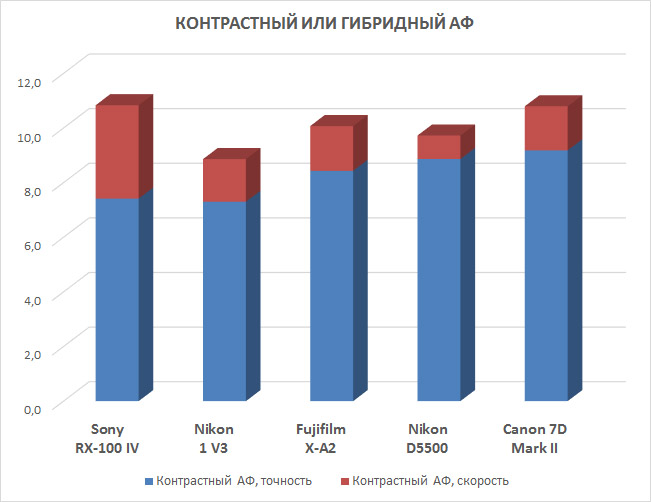
And for those who are interested in more accurate data on the speed and accuracy of the AF, the chart is built using the following data (average for tests −1EV and −2EV):
As you can see, the shooting accuracy of the Sony DSC-RX100 IV is not the highest, but not too low. We can tentatively assume that with a −1EV illumination, the camera will take 4 well-focused frames out of 5. And the speed, we repeat, is phenomenally fast, the contrast-sensitive autofocus Sony RX100 IV works twice as fast as the contrast (hybrid) AF of the strongest competitors.
For a complete description of the technique, see comments on it.
Autofocus and burst shooting
So, the previous test is a test of autofocus operation in difficult conditions (low light, low contrast of the subject being shot). But, of course, we are also interested in the AF operation under ideal conditions (normal illumination, high contrast). We combined this test with measurements of the speed of serial shooting. Testing conditions are described in the article "".
The Sony DSC-RX100 IV has two burst modes: normal and fast. Moreover, the instructions, as usual, do not explain how autofocus works in these modes. Although, in theory, it would be easy to write: “Autofocus operation is determined by setting the“ AF operation mode ”menu. It can be frame-by-frame and continuous. ”
Since we test the shooting speed and autofocus at the same time, in this test we set the AF mode to continuous, although this, in theory, reduces the shooting speed. But burst shooting with focus on the first frame of the series is something exotic. This is a shot of a still, well-lit subject (no flash). What could be such an object? Of course, you can find examples, but it seems to us valuable the speed of serial shooting, when the camera manages to track the movement of the object. And the maximum burst speed that the camera can in principle develop is of dubious practical value.
But let's get down to practice. When shooting high quality JPG (Fine), normal burst shooting runs smoothly without a fast burst. The camera just “clicks” ad infinitum at a speed of 5.3 fps. When we start shooting JPG in accelerated shooting, at first there is a fast series - 27 frames at a speed of 10.2 fps, and then (after filling the buffer) the camera goes into normal shooting mode - at a speed of 5.3 fps to infinity.
As you can see, the maximum speed here is very different from the declared 16 fps. But the camera’s autofocus practically doesn’t “smear”. As can be seen from the graphs, individual frames "drop out", are out of focus. But in general, the survey is very accurate, with an average score of over 9.3. That is, almost all frames in a long series (200-300 frames) are very well focused, almost perfect. Recall that the photographer does not stand still during shooting, but periodically approaches / moves away from the target and to the target.
We pass to shooting RAW. In normal shooting mode, the camera “snaps” 31 frames at a speed of 4.6 fps, and then goes into a slow 1.6 fps mode, in which it can “click” indefinitely.
In the accelerated shooting mode, the speed of the fast series increases to 8.2 fps, and the number of frames remains very impressive - 27 frames. Then the buffer fills up and the camera goes into the same slow endless mode of 1.6 fps. Here we also see a very high focusing accuracy - 9.3-9.4 points out of 10 possible.
And finally, when shooting RAW + JPG in normal mode, the camera “snaps” a fast series of 30 frames at a speed of 4.4 fps, and then goes into a slow endless mode of 1.3 fps. In the accelerated shooting mode, a fast series of 28 frames “snaps” at a speed of 8.9 fps. Then follows the same slow 1.3 fps mode.
Here, judging by the left graph, the Sony DSC-RX100 IV autofocus got off during the fast series. I don’t know what it was. Maybe a firmware bug, maybe a random crash. But such a thing we met.
Most likely, it was an accidental AF failure, since nothing similar was observed in the accelerated mode. And in all shooting modes, JPG and RAW were not observed either. But the average accuracy score due to a malfunction dropped to 8.8. And the accelerated mode confirmed that the Sony DSC-RX100 IV autofocus works very accurately - it gains an average of 9.3 points out of 10 possible.
In this test, we consider infinity the ability to make 100 or more frames in the steady state. The shooting was carried out with a shutter speed of 1/160 - 1/200 second, with a high-speed memory card SanDisk Extreme Pro SDHC UHS-I 16 GB (recording speed up to 95 MB / s).
Video
Thank God, this time I don’t need to disgrace and portray a specialist on video. Sergey Merkov tested the Sony DSC-RX100M4 in its “iXBT Digital Photo” section. It remains for me to once again give and quote the conclusions of Sergei Merkov:
“Of the minuses of the Sony DSC-RX100M4 that were found during testing, I would like to note a tendency to overheat the electronic filling, which does not allow long-term video recording in 4K mode. The choosiness of the camera in relation to memory cards is a deterrent, but this is just a statement of fact, nothing more. After all, the owner of the camera, knowing about such a feature of it, is sure to get the right amount of “right” media in advance. The limited battery capacity is easily compensated by stationary power supply or the use of any external battery with a USB port. Perhaps there are no other negative aspects in this chamber.
Pluses can be listed for a very long time, we will focus on the most outstanding: good sensitivity, good resolution, electronic stabilizer with signs of intelligence, ideal for a camera and even a video camera, beautifully executed high-speed video recording mode. And, of course, the huge number of settings that any professional camera would envy is at least surprising. But is a similar number of settings required for a device whose form factor does not imply professional use? The answer to the question will be ... also the question: who said what does not imply? ”
In these conclusions, only the phrase bothers me: "... an electronic stabilizer with signs of intelligence, ideal for a camera and even a camcorder ...". It is annoying, because in the photo mode we did not find a high stabilizer efficiency. And an electronic stabilizer with signs of intelligence is a "toy" for video, in the photo mode it just does not work. It doesn’t even turn on.
Summary
This is our second test, which ends not with blurry conclusions, but with the so-called “Test Card”:
| Indicator | Quantification | Quality rating * |
| Design, ergonomics | — | Good |
| Functionality | — | Very good |
| Minimization of weight, size | — | Fine |
| Quality / price ratio | — | Good |
| Resolution in light scenes (distinguishable megapixels) |
14.2 out of 20 | Good |
| Resolution in dark scenes (distinguishable megapixels) |
11.5 out of 20 | Good |
| Noise level in bright scenes | 3.0 points | Good |
| Noise level in dark scenes | 5,4 points | Satisfactorily |
| Contrast AF accuracy in bright scenes | 9.4 points | Very good |
| Contrast AF accuracy in dark scenes | 7.4 points | Good |
| Contrast speed in bright scenes | — | Fine ** |
| Contrast AF speed in dark scenes | 3.4 points | Fine *** |
| Burst Speed with tracking AF |
JPG - 10.2 fps / 27 frames RAW - 8.2 fps / 27 frames | Fine |
| General lens performance | — | Fine |
| Stabilizer efficiency in photo mode |
3 EV | Good |
| General movie indicators | — | Very good |
* Includes camera grade.
** Matches the uniquely fast burst speed.
*** The speed of contrast AF has reached the level of phase AF.
Explanations must be added to the test table:
- For the unique design of the Sony DSC-RX100 IV, we rated it Good. Of course, Sony did the impossible, created a technical masterpiece. But this masterpiece is not very convenient in shooting. In our humble opinion, one could sacrifice miniaturization, but make the camera more convenient.
- The noise level (3 points in bright scenes and 5.4 points in dark scenes) for the 1 inch sensor is uniquely low. But by the standards of Four Thirds and especially APS-C, it is quite high. Therefore, the noise level was also marked “Good” in bright scenes and “Satisfactory” in dark ones.
Once again, the Sony DSC-RX100 IV is unique. This is a compact camera with professional camera manners. This camera blocked the possibilities of compacts with a huge margin. But in terms of picture quality, it only approached the level of the entry-level SLR.
For those who need a compact camera, the Sony DSC-RX100 IV is better than nothing (though, with an eye on a very high price). But the advertising slogan “professional opportunities in a compact package” is a clear exaggeration. If you make the advertising slogan more truthful, you get something like: “Amazing, ahead of its time compact - with image quality almost like an entry-level SLR, with a professionally high shooting speed. But very expensive ”.
Gallery
And now we pass to one more test - not laboratory. Most of the gallery’s frames were shot at sensitivity up to ISO 500. And it demonstrates that Sony DSC-RX100 IV makes very good shots at low sensitivity, like a not-so-advanced SLR. But then, as the ISO grows, we observe more and more intense noise reduction.
And, unfortunately, there is no escape from this. Although Ryksa IV made a big leap forward and overtook all the compacts I knew, it didn’t jump to the APS-C mirror, and shots taken at sensitivity higher than ISO 500 gradually lose photorealism and pass through noise filters.
Some shots show how well the Sony DSC-RX100 IV blurs the foreground and how hard it is to give a strong blur to the background.
| Gallery | |||
 |
 |
 |
 |
 |
 |
 |
 |
 |
 |
 |
 |
 |
 |
 |
 |
 |
 |
 |
 |
 |
 |
 |
 |
 |
 |
 |
 |
 |
 |
 |
 |
| Test materials for download | |
| Test "Resolution - Noise" | Sony RX100 IV, RAW, High Light, Noise Canceling, 140 MB Sony RX100 IV, RAW, low light, noise cut off, 137 MB Sony RX100 IV, JPG, High Light, Noise Reduction Norm., 55 MB Sony RX100 IV, JPG, Low Light, Noise Reduction Norm., 48 MB |
| Optics Test | Sony RX100 IV, Vario-Sonnar T, f / 1.8-2.8, 24-70 mm - RAW, 355 MB |
| Tests Autofocus "Burst shooting" |
Sony RX100 IV, Low-Light Autofocus Audio Recordings, 1.5 MB Sony RX100 IV, Burst and Auto Focus Audio Recordings, 5 MB |
| Gallery | Sony RX100 IV, gallery of test shots, JPG, 152 MB Sony RX100 IV, gallery of test shots, RAW, 612 MB |
SocialMart Widget
In contact with
Classmates
02.09.2012 17739 Tests and Reviews 0
There are times when the owner of a SLR camera is somewhat weighed down by its weight. And how many times did the camera just stay at home because it was “hard to carry!” How many successful shots were missed this way? And not to count ... Therefore, the question is more and more often heard: which camera to take the second to the DSLR as a notebook?
Several companies immediately released compact cameras that can satisfy even the picky owners of DSLRs with their image quality and specifications. , and the Sony Cyber-shot DSC-RX100 - here is the list of new products for the “Summer 2012” season. Meet the Sony RX-100.
The main features of the model:
- 20-megapixel 1 ”CMOS sensor;
- a lens with a range of equivalent focal lengths of 28-100 mm;
- aperture ratio f / 1.8-4.9;
- rate of fire up to 10 frames / s;
- 3-inch display with a resolution of 1228000 pixels;
- Full HD video at up to 60 frames / s.
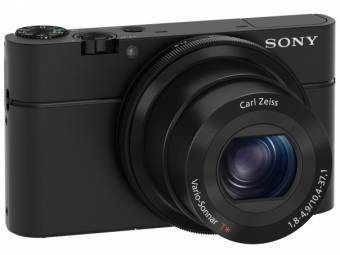
Despite the use of a relatively large matrix in the CyberShot RX-100, the size of the camera turned out to be more than compact. Such a baby can easily be put in your pocket. The body design is surprisingly simple, without any decor elements. Everything is extremely concise - only ferrous metal.
The top panel is almost empty: the power button, the shutter button with the zoom lever and the shooting mode dial. A little to the left - two openings of stereo microphones and a flash (by the way, there is no separate button for lifting it). There is no hot shoe for system accessories.
The flash rises up on the spring-loaded “leg”.
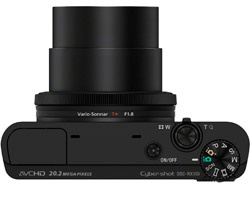
Almost all controls are on the back of the camera. Everything is traditional for compacts here. In the center is a naviped with a rotating outer ring. Next to it is the Fn button (on-screen menu), MENU (everything is clear here), a view, a help button, and in the very top right corner there is a separate button for video recording.
The screen of the CyberShot RX-100 is simply gorgeous! With a diagonal of 3 inches, its resolution is 1228800 pixels. The image is very clear and bright, visible from any angle.
The RX-100 has one almost imperceptible, but very convenient control - the ring around the lens. It serves to change various parameters: from exposure to zoom, depending on the shooting mode.
The camera lens is her pride. With a rather modest range of focal lengths (28-100 mm equiv.), It boasts a very high aperture ratio in a wide-angle position - f / 1.8. Although in the teleposition it is significantly lower - f / 4.9.
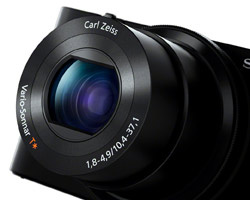
Turns on the CyberShot RX-100 not as fast as the photographer would like. It takes more than two seconds to unfold the lens, after another half a second the image appears on the display. And only at this moment the camera is ready for shooting.
Check burst speed and buffer size? We set the highest burst speed, file format - RAW + JPEG. Judging by the specifications, the camera should shoot up to 10 frames / s. We got only 6 frames / s, which is still very good for a compact! 8 frames are placed in the buffer, then the shooting pace drops. Subsequent frames are made as the previous ones are recorded on the USB flash drive. We used memory cards with a recording speed of 30 MB / s, the interval between shots after shooting a series was about one and a half seconds.
Separately, it is necessary to note the shutter speed. According to this parameter, the RX-100 is today one of the leaders among compacts. The shutter lag is extremely small. The camera takes a frame instantly.
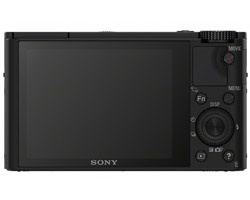
The autofocus system in terms of control logic and behavior is very similar to what we saw in Sony NEX mirrorless cameras. The focus point can be selected manually by pressing the center button of the navi pad. You can give the choice of focus area at the mercy of automation. The camera constantly adjusts focus. So after half-pressing the shutter button, she needs very little time to precisely focus. On average, a little more than half a second is spent on focusing. If you shoot a non-contrast subject with focus, there may be problems. But this is a typical situation for most cameras. In general, the focus of the RX-100 is accurate and tenacious.
In a number of shooting modes, you can enable tracking of an object located in the center of the frame. In other words, you need to put the subject in the center, press the central button of the navi pad, and the camera will track this object, keeping it in focus.
With manual focus, the frame section is automatically enlarged (by default, center). Focus control is carried out using a ring on the lens - very convenient!

Unlike almost all compacts, the Sony CyberShot RX-100 does not have a macro focus mode. That is, getting the camera to focus closer than usual will not work. In the wide-angle position, the minimum distance from the front lens of the lens to the subject is about 5 cm, and in the telephoto position is almost half a meter. It will not be possible to achieve a large-scale shooting.
At first glance, the RX-100 is no different from other compacts in operation: the same naviped and several buttons. This is partly true. But this model has a slightly different arrangement of the on-screen menu called up by the Fn button. Click it and select which parameter we want to change. The change of values \u200b\u200bis carried out by a ring on the lens. We saw something similar in the Samsung mirrorless.
But that is not all. The camera has two control rings: one on the lens, the second encircles the naviped. In the menu, you can program the functions performed by the ring on the lens. For example, I used it to set the ISO. You can also reprogram the left and right navigation buttons.
The only inconvenience of the lens ring is its smooth, non-discrete motion. But you have to choose discrete values: sensitivity, white balance settings, etc. .. It’s not always possible to get to the right place right away.
The main menu of the camera is borrowed from the Alpha line. It is understandable: the RX-100 is positioned precisely as the second camera for the owner of a SLR or SLT camera.
The Sony CyberShot RX-100 has a rather large matrix for the compact - 1 ”(13.2x8.8 mm). For comparison, matrices of a similar size are installed in the mirrorless Nikon 1. In addition, this compact has one of the fastest zoom lenses. In wide angle f / 1.8. All this, it seems, should contribute to obtaining images with a very blurry background. But in practice, this task can be quite difficult: a really high aperture is only in the wide-angle position of the lens, when the degree of blur is minimal. And when zooming, it quickly falls. And in the teleposition, the depth of field is great: because of the low aperture and the large minimum focusing distance.

Like all Sony cameras, the RX-100 can take panoramas, glue HDR and offers the photographer a whole range of interesting filters collected in one place - the menu item “Picture Effect”.
Video shooting is possible in resolutions up to 1920x1080 at a frequency of 50 frames / s, frame-by-frame scanning. During shooting, you can use the zoom, as well as change the sensitivity and enter exposure compensation. In a separate video mode, it is possible to choose: shoot with manual or software exposure settings, in priority shutter speed or aperture. It is possible to use tracking autofocus. Very pleased with the highest detailing of the videos.
Test shots:

|
Minimum zoom |

|
DSC-RX100, ISO 125, F5.6, 1/1000 s Maximum zoom |
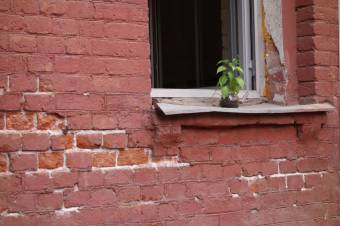
|
DSC-RX100, ISO 250, F4.9, 1/125 s |

|
DSC-RX100, ISO 500, F4, 1/30 s |

|
DSC-RX100, ISO 125, F5, 1/250 s |

|
DSC-RX100, ISO 125, F1.8, 1/1600 s |

|
DSC-RX100, ISO 125, F5.6, 1/640 s No HDR |

|
DSC-RX100, ISO 125, F5.6, 1/640 s |

|
DSC-RX100, ISO 125, F4, 1/1600 s Miniature Effect: Auto |
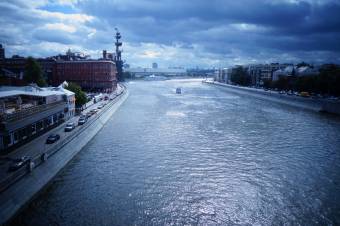
|
DSC-RX100, ISO 125, F4, 1/2000 s Cheap camera: cold |
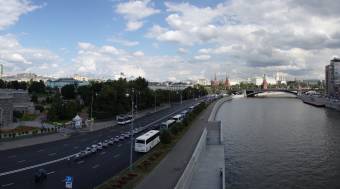
|
DSC-RX100, ISO 125, F6.3, 1/500 s Panoramic shooting |
findings
Of course, Sony CyberShot RX-100 is one of the leaders among all the compacts on the market in terms of speed, quality of photos and videos, convenience and speed of control. It only competes with large-matrix cameras like the Canon PowerShot G1X.
You can talk about the pros of the RX-100 for a long time, but you should also note the cons. The main one is, perhaps, a rather flat picture. Despite the ultra-fast lens and a relatively large matrix, the camera is almost not able to blur the background much. This can be done only when shooting small objects from a minimum distance. But there is a problem: there is no macro mode in the camera as such! The maximum that she is capable of is taking pictures with 5 cm in a wide-angle position.
The second major minus of the RX-100 is its price. To date, the camera stands as an amateur DSLR or a good mirrorless. Sony marketers obviously relied on wealthy DSLR owners who dream of a quality compact. Indeed, for a simple lover of charms, it is in this model in comparison with cameras of other classes that is clearly not enough to buy it.
Sony CyberShot RX-100 vs Olympus XZ-1 vs Canon PowerShot S100


Sony CyberShot RX-100 vs Fujifilm X10 vs Canon PowerShot G1 X


Pros:
- compactness;
- high quality image up to and including ISO 800;
- operational management;
- high speed of work;
- excellent video quality;
- manual settings when shooting movies;
- HDR and panorama shooting, additional filters;
- shooting in RAW.
Minuses:
- small scale macro photography;
- relatively low aperture in teleposition;
- flat picture due to large depth of field;
- high price.
Our resume
Sony CyberShot RX-100 - a model for those who have long dreamed of an uncompromising and at the same time ultra-compact camera. In terms of image quality and functionality, it occupies one of the leading positions among all compacts. But the high price puts this model on a par with amateur mirrors and mirrorless ones. And in this segment, competitors are much more serious. And not with each of the competitors, the RX-100 can compete on an equal footing ...
General characteristics of Sony CyberShot DSC-RX100 |
|
| Title | Sony CyberShot DSC-RX100 |
| Announced | 2012-06-06 |
| Format | Compact |
Image sensor |
|
| Matrix size | 1" |
| Matrix type | CMOS |
| Effective Pixels | 20.2 million |
| Total number of pixels | 20 million |
Lens |
|
| Focal Length Multiplier | 28 - 100 mm |
| Maximum aperture | F1.8 - F4.9 |
| Optical zoom | Optical Zoom: 3x |
| Digital zoom | 14x |
Focusing |
|
| System / AF Points | Contrast Detect (sensor), Multi-area, Center, Selective single-point, Tracking, Single, Continuous, Face Detection |
| Autofocus | there is |
| Manual focus | there is |
| Macro shot | 5 cm |
Exposure Control |
|
| Exposure setting | 3 EV (in increments of 1/3 EV) |
| Metering Modes | multi-segment, center-weighted, spot metering (center point) |
| Equivalent ISO film sensitivity: | Auto, 100, 200, 400, 800, 1600, 3200, 6400, 12800, 25600 |
Flash |
|
| Built-in flash | There is a retractable |
| External flash | Not |
| Flash modes | auto, on, off, slow sync |
Other characteristics |
|
| Maximum resolution | 5472 x 3648 |
| Image aspect ratio | 1:1, 4:3, 3:2, 16:9 |
| Image stabilization | With a lens |
| White balance | 9 positions and manual settings |
| Excerpt | 30 - 1/2000 sec |
| Aperture Priority Mode | there is |
| Shutter Priority Mode | there is |
| Burst shooting | There are (2.5, 10 frames / sec.) |
| Video modes | MPEG-4, AVCHD, 1920 x 1080 (60 fps), 1440 x 1080 (30 fps), 1280 x 720 (30 fps), 640 x 480 (30 fps) |
| Remote control | Not |
| Self-timer | With a delay of 2 or 10 seconds, P or trait 1/2 |
| Time recording | Not |
| Used information carriers | SD / SDHC / SDXC, Memory Stick Duo / Pro Duo / Pro-HG Duo |
| Viewfinder | Not |
| Total number of LCD dots | 1,228,800 pixels |
| Zoom Playback | there is |
| Video Output / USB / IEEE 1394 / Serial | Yes / Yes / No / No |
| Battery and Charger | there is |
| Battery Type | Lithium-Ion NP-BX1 |
physical characteristics |
|
| Weight (with batteries), g | 213 |
| Sizes, mm | 102 x 59 x 36 |
The Sony RX100 III is the third of a series of devices with a zoom lens, which, despite its tiny size, has very great capabilities. According to many, this is the best camera that you can buy now. She very skillfully combines everything important for photographers - a large matrix and a good lens, while maintaining a truly pocket size.

Sony Cyber \u200b\u200bShot DSC RX100 III Camera Reviews
Sony uses the same large 1-inch matrix with a resolution of 20 megapixels for the third time. The matrix is \u200b\u200bdenoted by Exmor R, which means that it is made using BSI CMOS technology and can operate at speeds from ISO 125 to 12.800. The camera is equipped with the new BIONZ X image processor.
What's New in Sony RX100 III
In the Sony Cyber \u200b\u200bShot DSC RX100 iii, we find a completely new lens. This is the design of Carl Zeiss Vario-Sonnar T *, which this time has a range corresponding to 24-70 mm and light f / 1.8 - f / 2.8. 24 mm at the bottom of the range - and already a fairly wide viewing angle, on a camera with an APS-C sensor. In addition, the brightness really makes an impression. When there is not enough light, of course, optical stabilization of the lens comes in handy. In turn, when there is too much of it, we have an ND software filter.

Version III is distinguished by framing photographs, namely the built-in OLED digital viewfinder with a resolution of 1.44 million pixels. The viewfinder is hiding in the body like a flash, and we can only remove it when it is actually needed. In addition, a swivel but not touch screen is available.
Our review of the Sony DSC RX100 iii showed that the shutter works at a speed of 30 - 1/2000 sec.
The camera can register 2.9 frames / s in burst mode, and after locking the focus, the speed increases to 10 frames. Of course, as an improved design and befitting, we have the ability to save files in RAW format.
What is already standard for Sony among the modes P, A, S, M, we will also find many creative modes that allow you to select a scene or apply various color effects.
Construction and workmanship
If you were holding a Sony Cyber \u200b\u200bShot DSC RX100 camera in version I or II, then you will feel at home. The case is one and the same, well-known design, made in modern style. The versions differ only in thickness - version II expanded the body by 2 millimeters, and version III by 3 mm in place of the lens, which has a completely new design. All the differences between the cases are visible only when we put them directly next to each other. This is best evidenced by the fact that all covers from the RX100 II are also suitable for version III.
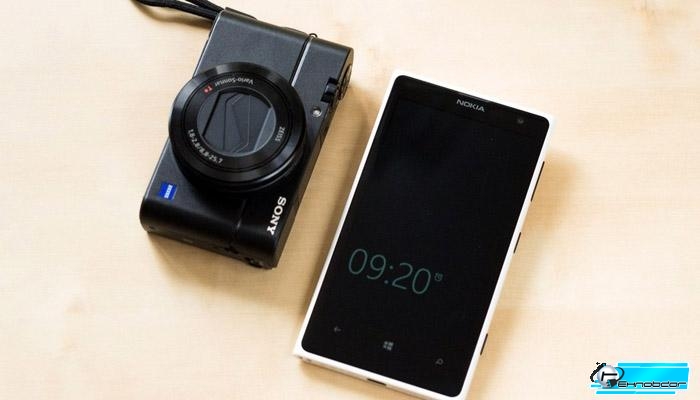 Sony RX100 III - Design and Performance
Sony RX100 III - Design and Performance The same design, the same advantages and disadvantages. The disadvantage is very weak control. The entire front of the camera is covered with continuous material - I miss some rough rubber here, thanks to which the camera would confidently lie in my hand.
As for the quality of execution, there can be no objection. The case seems to be a dense, uniform block. The assembly of all elements is at a very high level, but the camera, unfortunately, is not protected from dust and moisture.
Control
The number of buttons on the miniature case is quite large. On the top panel of the Sony Cyber \u200b\u200bShot DSC RX100 III we find the power and shutter button surrounded by the zoom slider, the mode dial and the small lock lever that lifts the flash. After the exit, the lamp can be bent back and, thanks to this, reflect light from the ceiling in the room. This is a really useful feature, albeit a bit uncomfortable, because you need to hold the flash all the time with your finger.
 Sony RX100 III - Management and Maintenance
Sony RX100 III - Management and Maintenance At the back, the most important element is the settings circle, which also contains 4 switch buttons, which serve simultaneously as shortcuts for various functions. The top button changes the elements on the screen (or in the viewfinder), and the bottom is responsible for adjusting the exposure. Left and right buttons can be programmed. By default, the left one is responsible for the shutter mode, and the right one is for the flash mode. Inside the wheel is the “OK” button, which can also be programmed for your own needs.
 RX100 III - Management and Maintenance
RX100 III - Management and Maintenance The remaining buttons are located above and below the wheel: the record button, the functional principle menu (Fn), the camera menu, the photo viewing mode and the “c” button. The last control is the ring around the lens. It can be used to change the focal length, as well as to change other settings, such as ISO, aperture, shutter speed, exposure compensation, white balance and other functions.
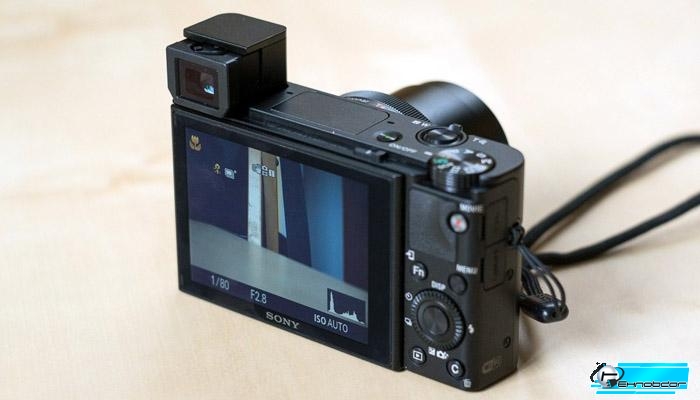
An interesting novelty in the RX100 III case is the integrated OLED digital viewfinder with a resolution of 1.44 million pixels. The developers managed to place it inside the case. Due to the fact that almost the entire back wall is covered by a screen, there was no place for an additional eyepiece window on the rear panel of the camera. Therefore, the viewfinder, if necessary, extends like a flash.
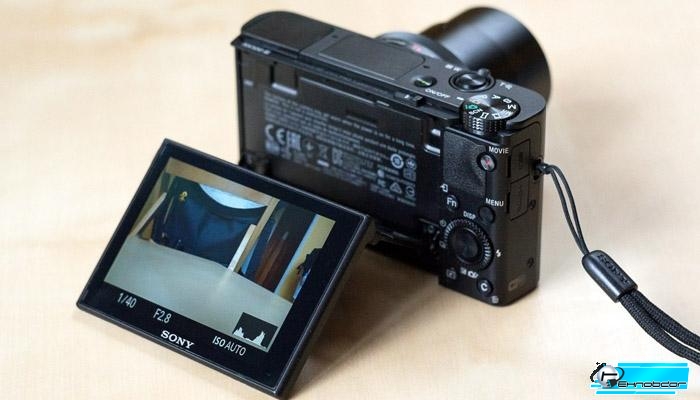
The viewfinder opens with a small button located on the left side of the camera. Then you should pull the eyepiece towards you. The application of the eye to the eyepiece turns off the screen and automatically launches the image in the viewfinder. Using such a retractable design is surprisingly convenient.
The image is relatively large and bright, color rendering and a large span of the display timbre are also noteworthy. It uses technologies such as cameras with a much higher price, for example, the Sony A7. A decrease in quality appears only in very low light conditions.
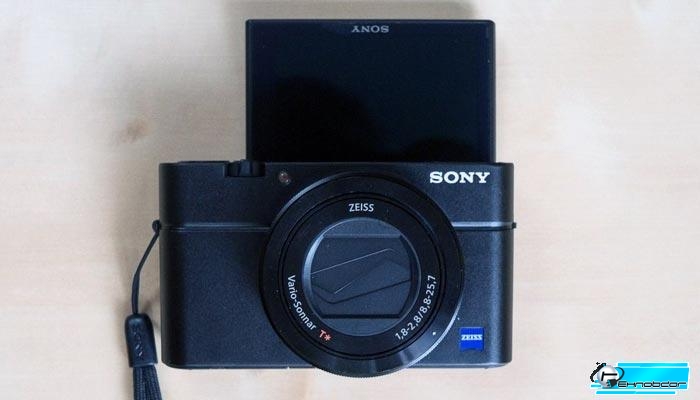 Viewfinder Sony DSC RX100 III
Viewfinder Sony DSC RX100 III The viewfinder is a useful feature, especially in bright sun, in such conditions the main screen of the camera turns into a mirror. When there is no big sun, using the screen is convenient. The screen size is quite large (3 ”), resolution (1.23 million pixels), and the colors are natural. The screen can be moved 45 degrees down and 180 degrees up, i.e. towards the front camera. The shutter mode in this case - automatically switches to a timer that fans of selfie will like.
Battery Sony RX100 III
The camera comes with a battery, according to the manufacturer, sufficient to take about 320 shots when using the screen and up to 230 from the viewfinder. After a two-week test of the camera, I can confirm these results. Is this a lot? Most likely no. On the other hand, in the pocket camera segment, it is difficult to expect better results.
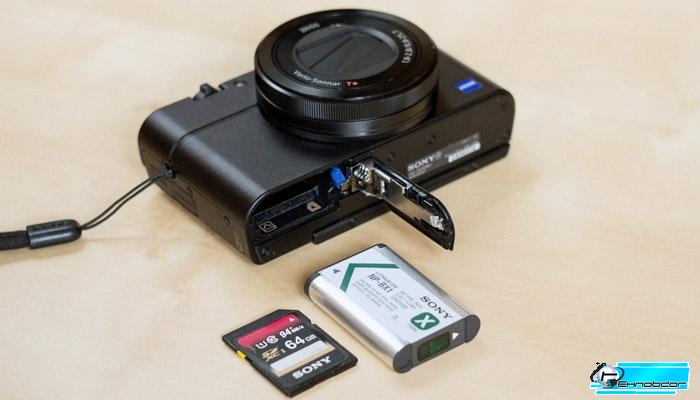 Sony RX100 III - Battery
Sony RX100 III - Battery The Sony RX100 III is equipped with a replaceable battery, however, the charger is not included. In the box we will find only a USB cable with an adapter for connecting it to an outlet. Therefore, we can charge the camera by connecting it to a wall outlet or USB port on a computer.
Connectors, Wi-Fi, NFC and applications
Sony RX100 III, given the small size, does not indulge in the number of connectors. There is only a mini HDMI output and a micro USB connector. Via HDMI, you can connect, for example, to a TV. The Sony DSC RX100 III can use 4K resolution, if only you have one.
The device also has Wi-Fi connection. Thanks to this, we can connect it with a smartphone that works as a remote control with image viewing function. You can also save photos and videos to your smartphone. Supported operating systems iOS and Android. As usual in the case of Sony, minus the company for the lack of support for Windows Phone.
 RX100 III - Connectors, Wi-Fi, NFC and Applications
RX100 III - Connectors, Wi-Fi, NFC and Applications In a specially prepared Sony store, you can download several interesting applications, for example, one that shoots and includes video itself. Some applications can be downloaded for free, but you will have to pay for the rest.
Autofocus and speed
Autofocus speed is very good during the day and much worse at night. In practice, for most tasks, speed is enough.
Sony RX100 - Autofocus and Speed
If we talk about the speed of the camera, then it is also good. It starts up quickly, and after a while the camera is ready for shooting. The device slowed down only when I took a few seconds to photograph at the fastest speed of 10 frames / s. Dumping such a series of images onto a card can take several seconds even on the very fast SDXC UHS-I tab of 94 MB / s.
Unfortunately, the camera lacked the ability to quickly change the focus point. I was looking for her for a very long time, but there is simply no such opportunity! To change the active point you need to do this in the menu, which is very inconvenient. This is a big omission of Sony in cameras of this class.
Video
The camera has advanced shooting capabilities and can save recordings with the XAVC S, AVCHD or MP4 codec. Maximum quality Full HD, 100p, 50M.
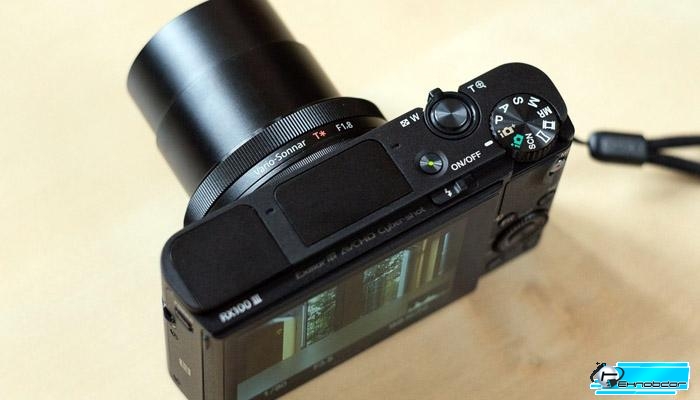 RX100 III
RX100 III We have modes P, A, S and M at our disposal, and therefore, during recording, we can arbitrarily change the exposure parameters. When shooting video, autofocus, zoom and image stabilization work. Autofocus and digital zoom have a long response time, they are very smooth, so nothing twitches on the video.
In Sony RX100 III I like the fact that it will be equally good both in the hands of an amateur and in the hands of an advanced photographer. In the beginning, we are surrounded on all sides by various graphic explanations of the modes and a lot of unnecessary animation. Fortunately, all of this can be turned off.
I like Sony's consistency in approaching the menu. It is divided into categories that are divided into bookmarks. This is a convenient solution.
One of the most important functions on the menu is auto ISO in M \u200b\u200bmode. Of course, we can also turn on the bubble level, or histogram. In turn, the context menu provides quick access to 12 selected functions.
In the menu we can adjust the image quality to RAW, RAW + JPG, X.FINE, FINE and STD. It’s a pity that when recording RAW + JPG there is only the quality “fine”, and not “extra fine”.
Sony Cyber \u200b\u200bShot DSC RX100 III Photo Quality
Let's start with the lens. First of all, it gives a really clear and detailed image. I am surprised at the optical quality of the lens. Its range is 24-70mm and light, f / 1.8-2.8.
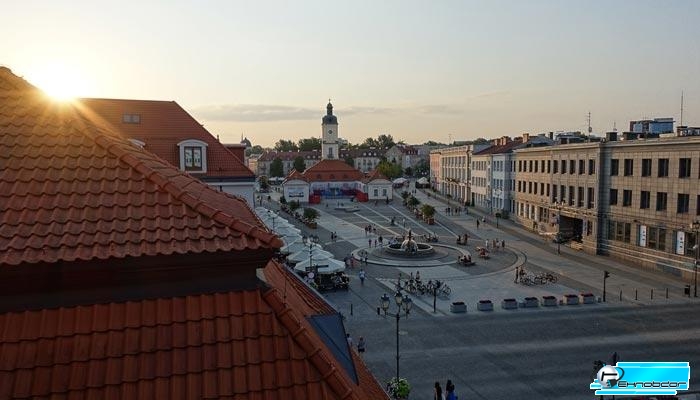 Sony RX100 III - Photo Quality
Sony RX100 III - Photo Quality The picture is very good for every combination of focal length and aperture. Even the most difficult combination, 70 mm, f / 2.8, and sharpening in the background makes the photos really “sharp”.
The lens gets dark pretty quickly. f / 1.8 is only supported for a wide angle, and f / 2.8 is already achieved at a focal length of about 32 mm. If we are talking about the quality of the matrix, then it is very good.
The range of frequencies and balance is surprisingly large, and in real life, in addition to this, there are systems to increase the dynamics of the image. Features like Auto DRO or Auto HDR really work in practice.
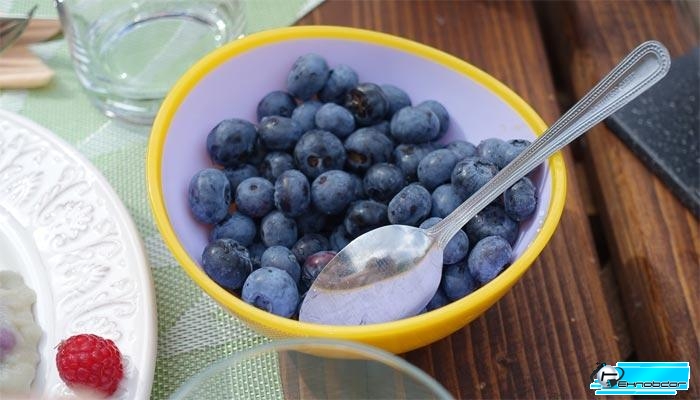
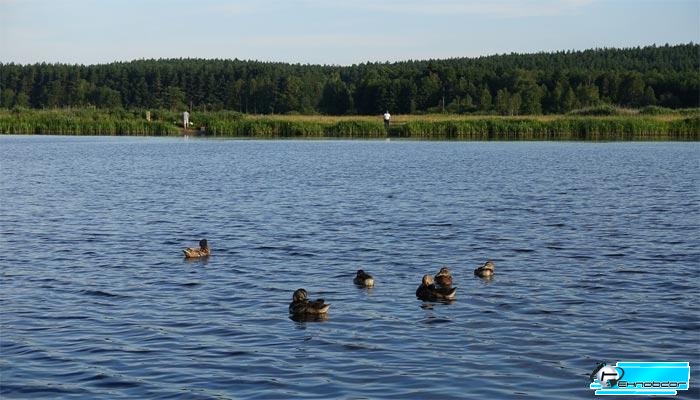
Photos from the Sony Cyber \u200b\u200bShot DSC RX100 iii camera

Photos from the Sony Cyber \u200b\u200bShot DSC RX100 iii camera
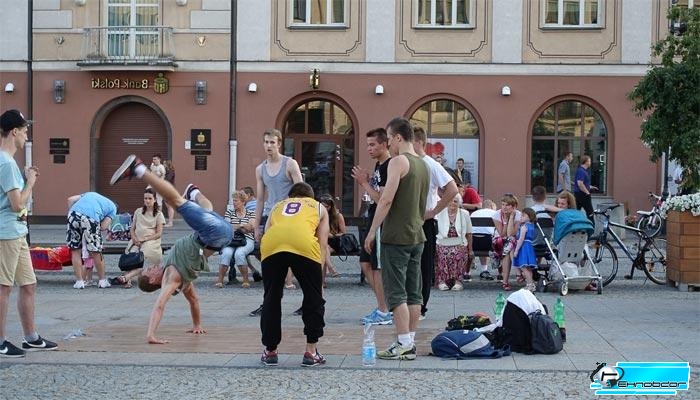
Photos from the Sony Cyber \u200b\u200bShot DSC RX100 iii camera
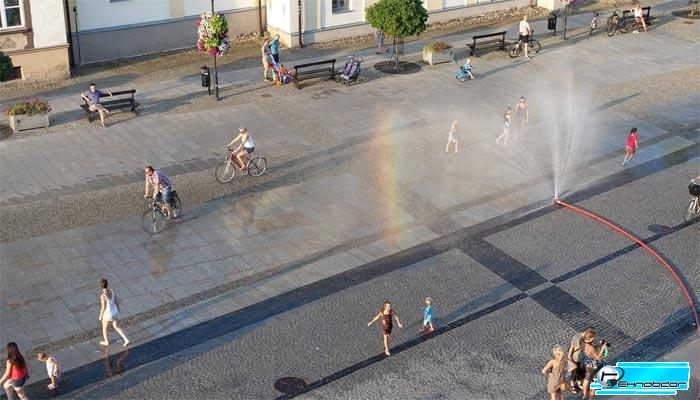
Photos from the Sony Cyber \u200b\u200bShot DSC RX100 iii camera
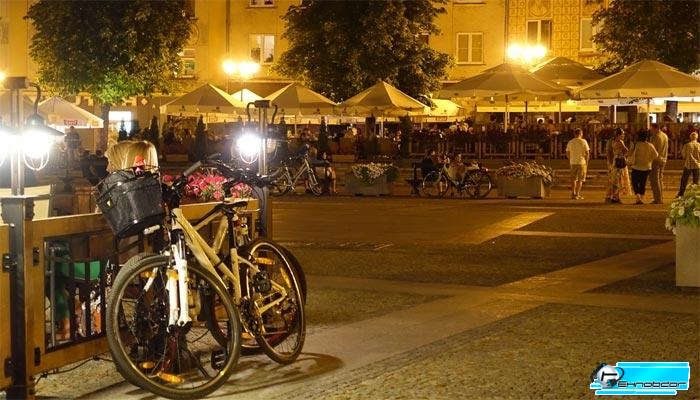
Photos from the Sony Cyber \u200b\u200bShot DSC RX100 iii camera
In the Sony RX100, good-quality photos are obtained mainly in good lighting conditions, and during night shooting I noticed a tendency to light up the pictures. The balance under incandescent lighting does not work exactly as I expected. As for quality at high speeds, it is very good to use ISO 1600. Noise still does not interfere, and the colors are not too dull. At ISO 3200, a clear decrease in image dynamics is already visible. Higher values \u200b\u200bmake slurry out of small parts. Thus, this is the major league when it comes to compacts, and the image quality is almost as good as in SLR cameras. And this is in the pocket camera!
Indeed, modern 1 ”matrices are one of the largest photographic benefits of recent years. Excellent ratio of size and image quality.
Finally
The Sony DSC RX100 III is a great camera for the conscious and demanding photographer. The camera is a competition not only for other compacts, but even for SLRs. The range of the lens is 24-70 mm. In addition, the Sony Cyber \u200b\u200bShot RX100 III lens is much brighter, which eliminates the advantage of DSLRs in the form of a larger matrix.
The new compact Sony will not disappoint. Of course, it has its own small disadvantages, but, none of them can overshadow the advantages. In general, quality is felt here. Camera Sony DSC RX100 - has, of course, the best body of all cameras in the RX series.
The only problem is the price of the device. Comparing Sony RX100 III and other cameras, the camera will lose in terms of price, since immediately after the premiere it cost more than $ 1000. For compact cameras, this is the space sum, although on the other hand, how much will a DSLR with a viewfinder and a lens with similar capabilities cost? As much or more.
Benefits
- Excellent picture quality day and night
- Very fast lens
- 24 mm wide angle
- Very good quality retractable viewfinder
- Great customization of buttons and knobs
- Swivel lcd display
- Wi-Fi, NFC, app store
- Many shooting modes, auto HDR, panorama and creative shooting modes
- AutoISO in M \u200b\u200bmode
disadvantages
- No filter thread on the lens
- Lack of gaskets
- The screen is not touch
- To hide the viewfinder, you must turn off the camera
- Cannot quickly change target AF point
- Pretty weak battery
- Price.
Video review Sony RX100 III
If you find an error, please select a piece of text and press Ctrl + Enter.

Vitamins and trace elements that are needed
Parathyroid gland, its hormones and functions
Russian noun
The quatrain about the teacher through the eyes of parents and children
Corner decoration in the 1st junior group